Your Guide to Silk Road Travel in Central Asia: Uzbekistan, Kazakhstan, Kyrgyzstan, Tajikistan, and Turkmenistan

Kokand, Uzbekistan: Travel Guide
If you’re traveling to the Fergana Valley from any other part of Uzbekistan, Kokand makes a great first stop. It’s the most tourist-friendly city in the region and is home to some impressive architecture—the Khudoyar Khan Palace being one of the biggest tourist attractions in the whole region.
In this concise travel guide, I’ll share with you all the best things to do in Kokand plus some extra travel tips.
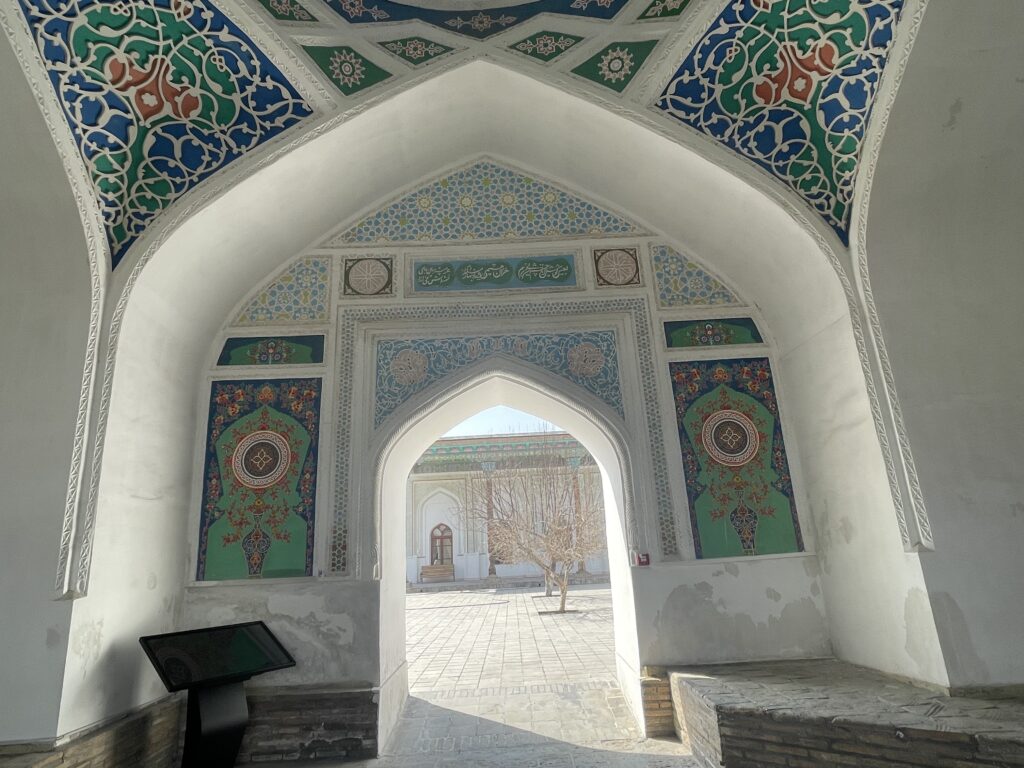
Things To Do in Kokand
Khudoyar khan palace.
Kokand is home to the most popular historical monuments of the Fergana Valley and the Khudoyar Khan Palace is certainly the biggest draw of the city. Located inside a large grassy park in the center of the city, it was completed in 1873.
The palace was commissioned by Sayid Muhammad Khudayar Khan , the most famous of all the Khans of Kokand, who ruled for four separate periods between 1845 and 1875. High taxes and a trade agreement with Russian general KP Kaufman made him unpopular and he had to flee to Russia during an uprising in 1875.
The script above the entrance to the palace apparently says, ‘ Sayid Muhammad Khudayar Khan – Great ruler ‘—an interesting slogan for a ruler who also reportedly fled to Bukhara twice.
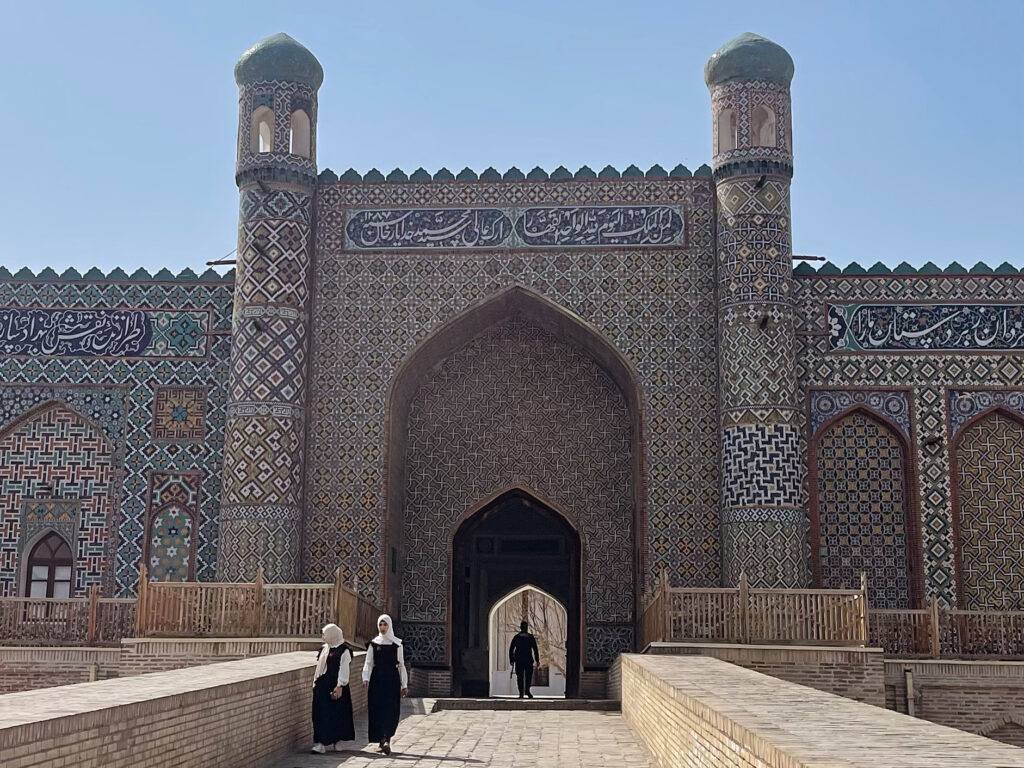
The palace originally included 119 rooms and 7 courtyards, with much of it designated as living quarters for the Khan’s harem. However, parts of the palace were destroyed, and now only 19 rooms remain. As you walk around the palace, you’ll see painted ceilings and carved wooden poles and doors, with local craftsmen at work.
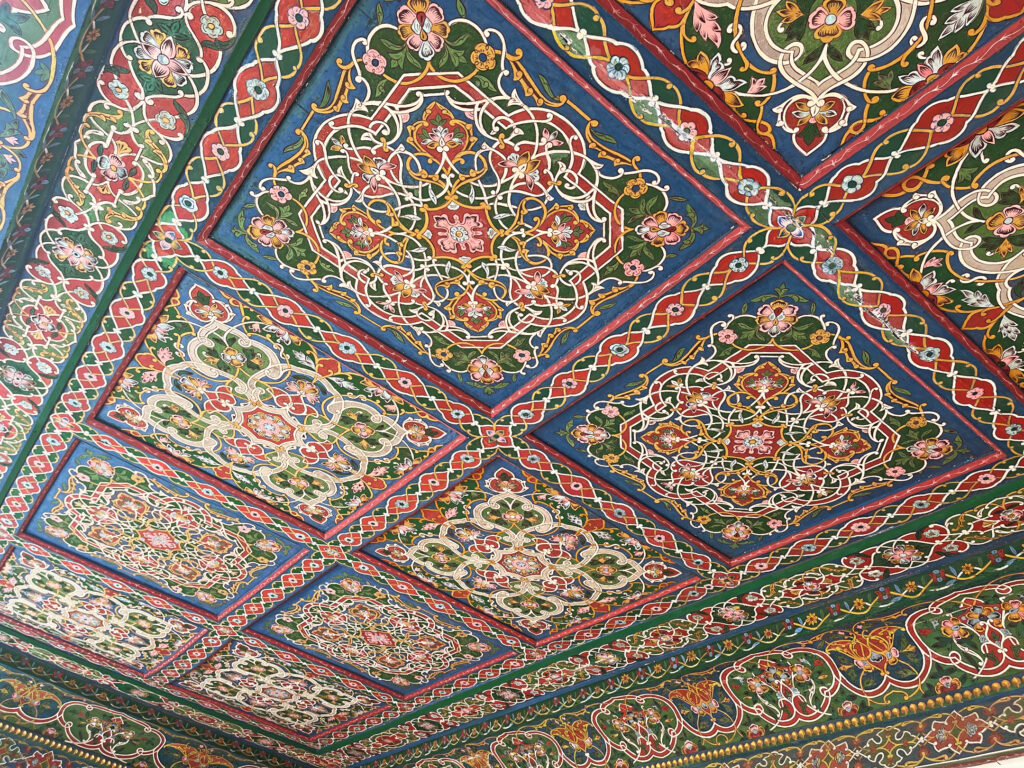
The most interesting rooms are the intricately decorated throne room and waiting room to your left upon entering the palace. Inside some of the other palace rooms, you’ll also discover some eccentric rooms, including unexpected European and Russian art and sculptures, as well as a room full of some rather tatty stuffed animals.
Jami Mosque
The Jami mosque was completed by Umar Khan , the seventh Khan of the Khanate, who ruled between 1809 and 1822. He elevated himself beyond the title of khan, bestowing upon himself the title of Amir al-Muslimin (commander of the faithful).
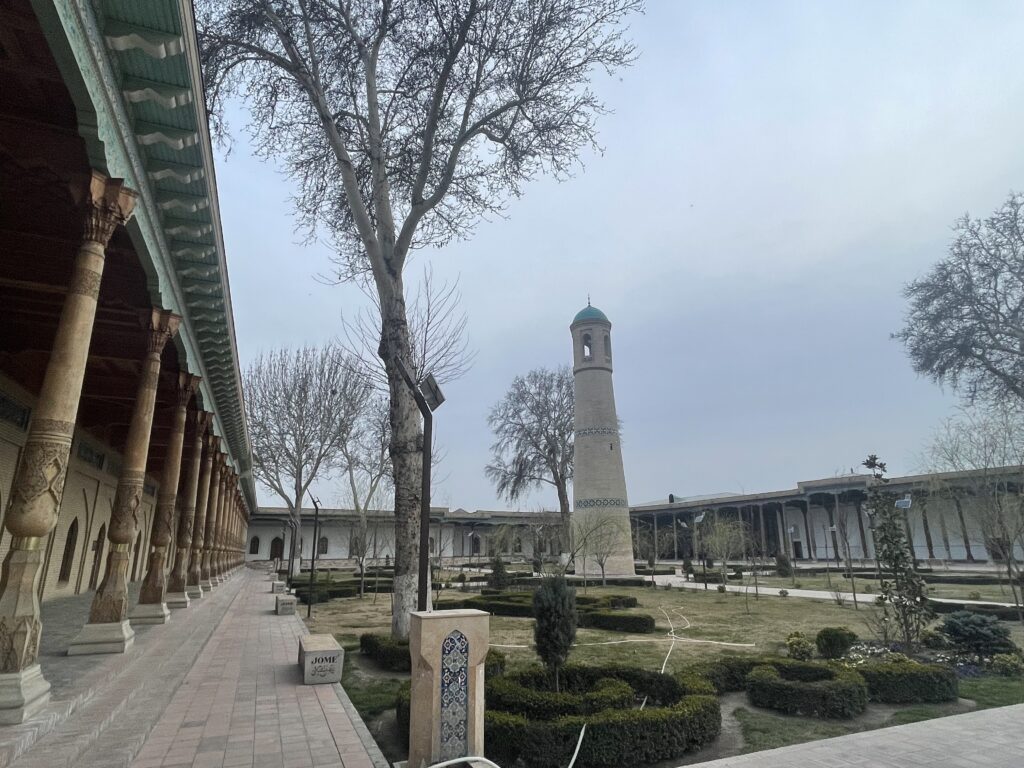
It is said that the mosque was built on the site of a previous mosque, which was destroyed by Genghis Khan in the 13th century as he swept through the region, razing towns and cities and butchering entire populations.
Nowadays, the mosque features a spacious grassy area, 98 wooden columns, and a towering 23-meter minaret, rumored to have served both as a call to prayer and an execution tower.
Norbutabiy Madrasah
The Norbutabiy Madrasah from the late 18th century is more typical of architecture from Bukhara . Situated near Chorsu Square, its rectangular shape boasts a spacious courtyard, flanked by towers on each corner.
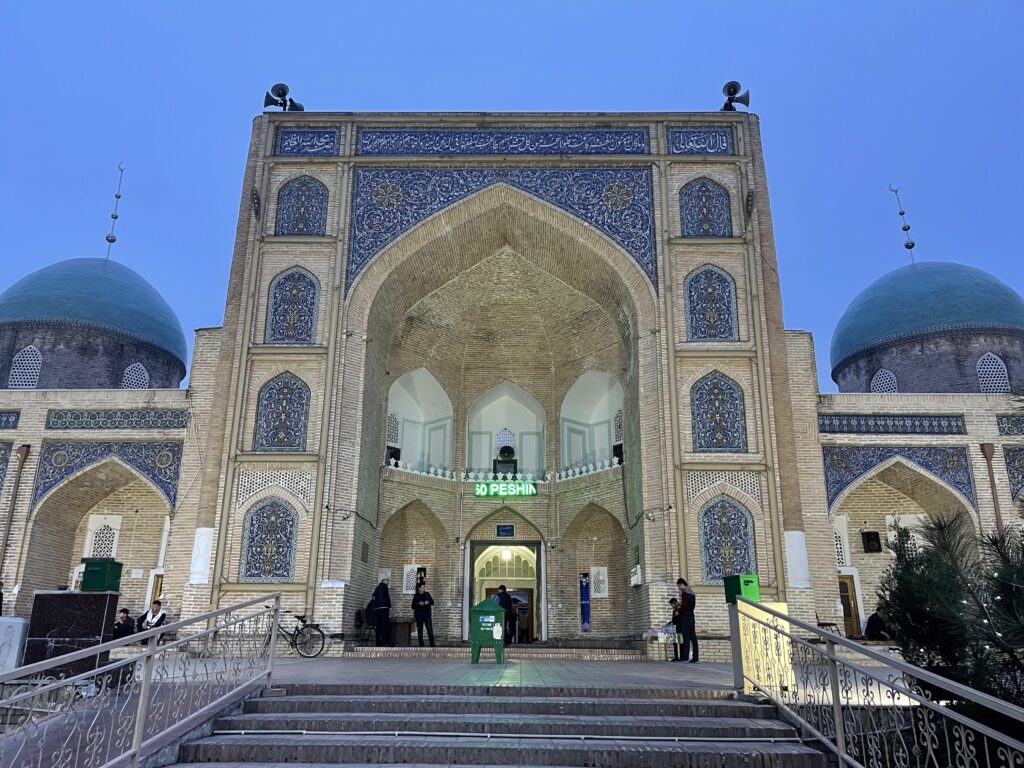
The madrasa operated throughout various periods, including the Soviet era, facilitating important religious events such as Friday and Eid prayers. Given the Soviet suppression of religion, this was unusual, as many religious buildings were compelled to close.
Damoi Shakhon and Modari Khan Mausoleums
Just a few minutes walk from the Norbutabiy Madrasah is a large graveyard which houses a number of monuments to commemorate Umar Khan and his family. The Damoi Shahkon Mausoleum (also known as Dakhma-i-Shokhon ) is a small mausoleum in a corner of the graveyard, with colorful portal, partially hidden by a tree.
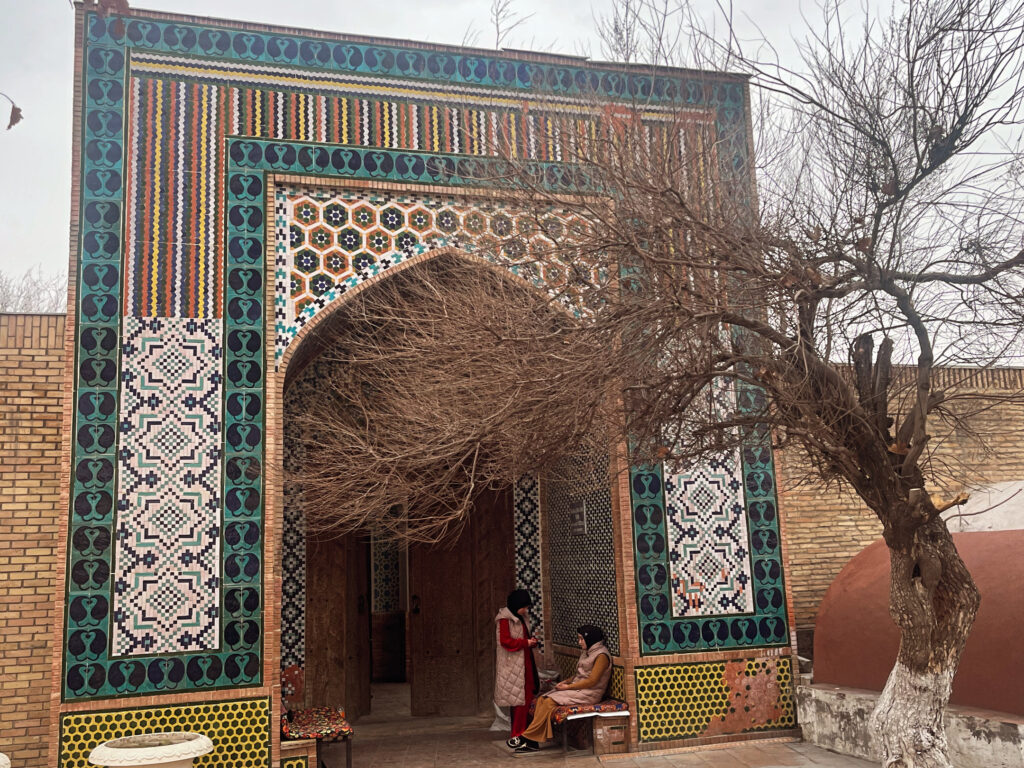
The Madari Khan Mausoleum , erected in 1825 for Umar Khan’s mother, also honors his wife, the poet Nodira . Tragically, Nodira was executed on the orders of Emir Nasrallah of Bukhara. Nearby stands a white stone table in her honor. The mausoleum is nestled amidst graves, making viewing somewhat challenging but feasible.
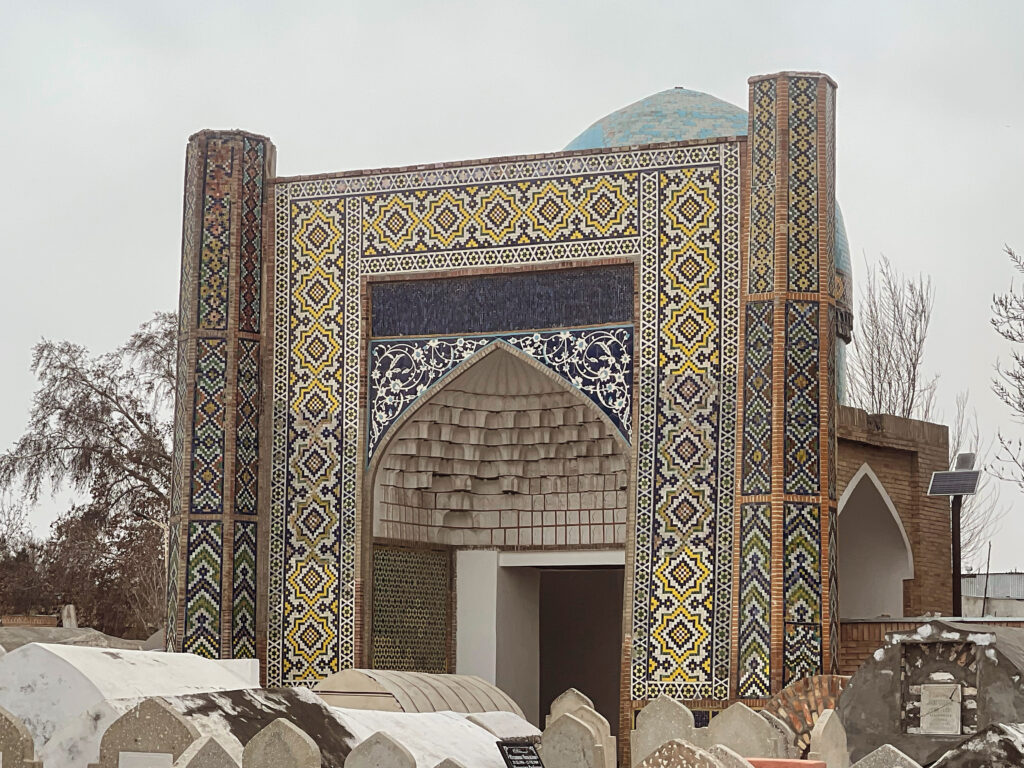
Very few tourists come here so expect to see only locals praying, quietly conversing or singing together. It’s certainly a serene spot to visit.
Other Places to Visit in Kokand
Other places to visit in Kokand include the Regional Studies Museum with exhibits on the history of Kokand, and the Mukimi Museum inside the Mian Hazrat Medressa , dedicated to local poet Mohammedamin Muqimi. The grassy park area around the Khudoyar Khan Palace is also a nice place to relax on a park bench and people-watch.
Where to Stay in Kokand
Accommodations in Kokand are somewhat limited, but I had the pleasure of staying at the luxurious Silk Road Kokand Hotel , undoubtedly the best hotel in town, although more expensive than the rest. The hotel large and spacious modern rooms and a restaurant, bar and garden. It’s one of the very few places in Kokand where you can relax with an alcoholic drink.
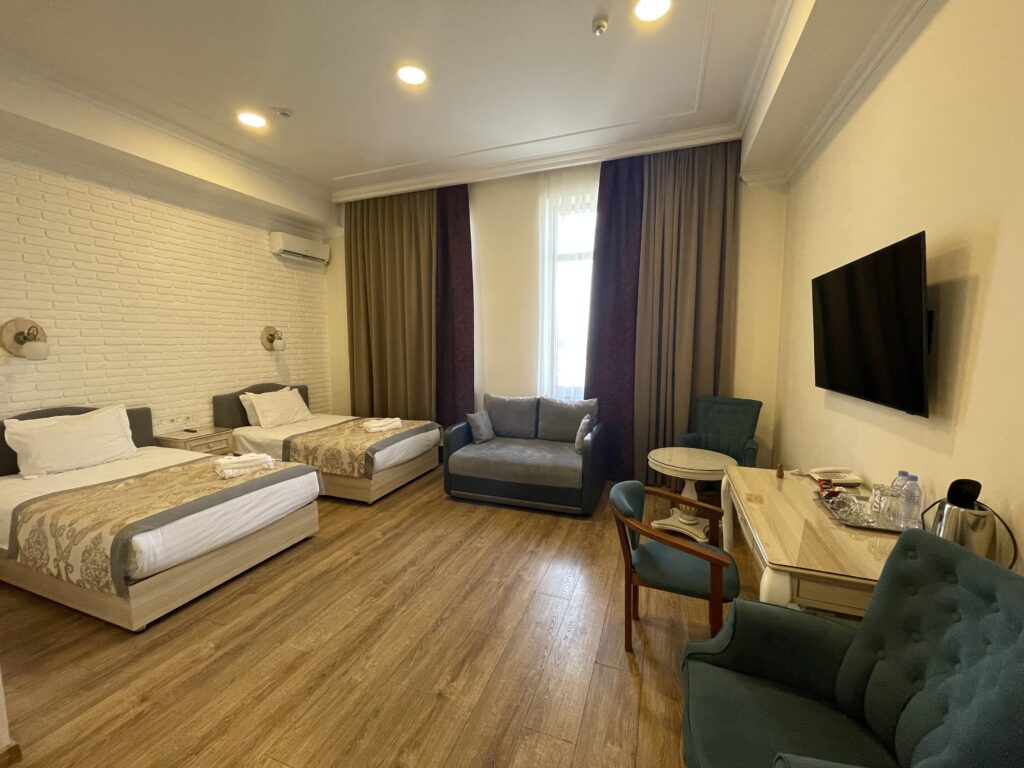
Rating: 9.5 | Breakfast? ✔ | Check Prices
Alternatively, the Reikartz Hotel and the Rohat Hotel offer more budget-friendly choices, both of which are centrally located.
How to Get to Kokand
From Tashkent: The best way is to travel by train which takes around 4 hours, 15 minutes to 5 hours, depending on the type of train. It’s a beautiful journey which passes through the mountains . There are at least 2 trains per day and you can book a ticket on the official website or the more user-friendly 12Go website .
There aren’t any buses between Tashkent and Kokand so to travel by car you need to go by shared taxi from Kuylyuk bazaar. The drive takes a similar time to the train but you’ll have to wait for the taxi to fill up before it leaves.
Alternatively, you can arrange a private taxi or book a transfer as part of a guided tour (see below).
From Samarkand: The sleeper train leaves once or twice a day from Samarkand. Book on the official website or 12Go website .
From within the Fergana Valley: You can travel around the Fergana Valley by train, shared taxi or marshrutka . A marshrutka, a minibus taxi, is the cheapest way but probably the least comfortable as they get packed out. Each city or town has a specific area to find marshrutkas and shared taxis.
Trains run daily between Kokand and Andijan but not Namangan. If traveling by train from Fergana city, you need to go from Margilan train station. Book on the official website or 12Go website .
Kokand Guided Tours
For a guided tour of Kokand, consider exploring the Fergana Valley as a whole, with stops at the Silk Factory in Margilan and the ceramics workshop in Rishton . You can do the whole tour including travel to and from Tashkent in one day or at a slower pace across two days including hotel.
One Day Tour
This trip starts with pickup from your hotel in Tashkent and transfer across the mountains for a guided tour through the main attractions of Kokand before moving on to learn about Rishton’s famous blue glazed ceramics at Rustam Usmanov’s workshop.
You then finish the day learning about silk production with the chance to buy silk scarves and dresses in Margilan before being transferred via private car back to your hotel in Tashkent.
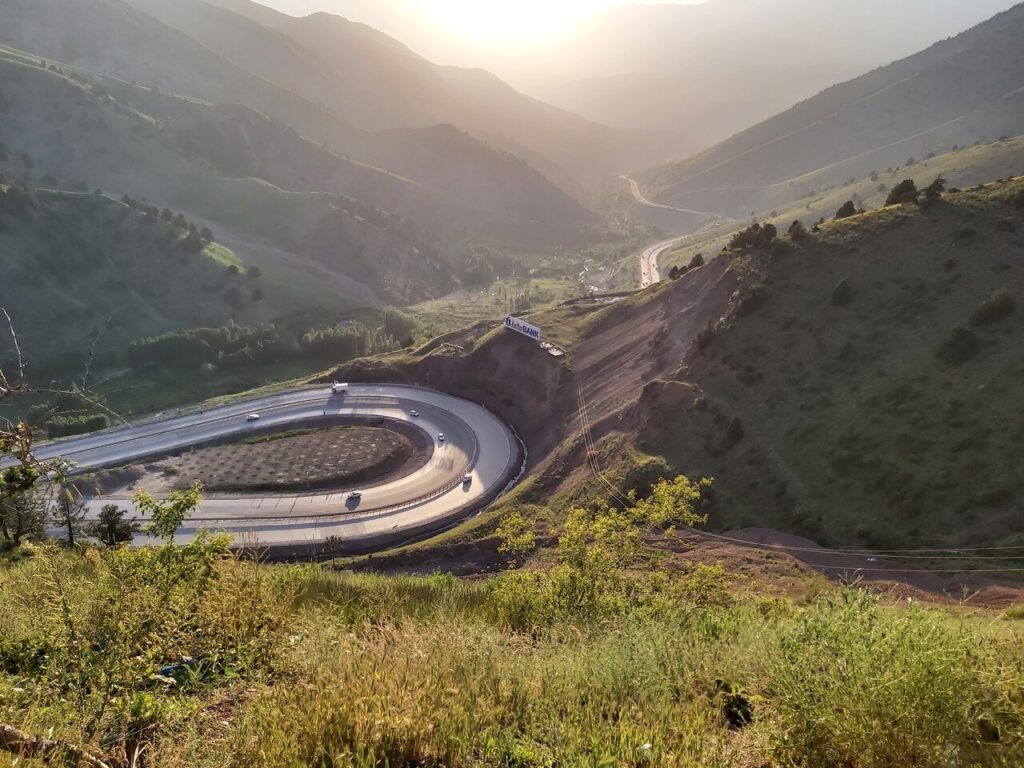
Ratings: 4.5 | Length: 10 to 14 hours | See Prices
“ A great trip for exploring a part of Uzbekistan that is not so well known. Having visited Khiva, Bukhara, Samarkand and Tashkent I wanted a tour to visit the Ferghana Valley. This trip was excellent in meeting this need .” Read More Reviews…
Two Day Tour
Alternatively, for a similar tour at a slower pace, consider this 2 day trip. This tour also includes pickup and drop-off in Tashkent plus one night’s accommodation in a boutique hotel.
Additional stop offs here include the Damoi Shahkon and Madari Khan Mausoleum plus a visit to the bustling Kum Tepa bazaar in Margilan (open on Sundays & Thursdays).
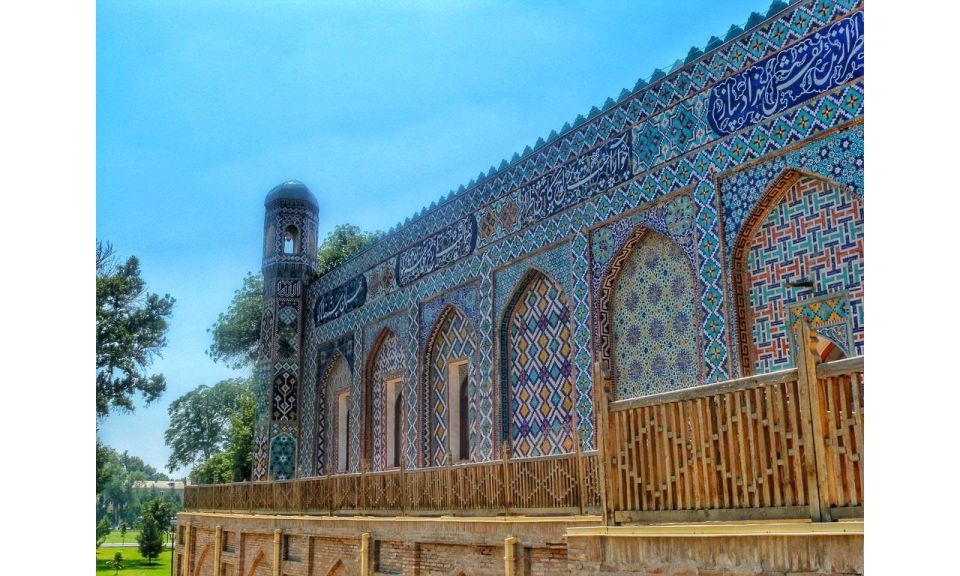
New | Length: 2 days | See Prices
Planning a trip to Central Asia? Read our Full Guide to Travel in Uzbekistan .
Get Free Email Updates!
Signup now and receive an email once we publish new content.
We will never give away, trade or sell your email address. You can unsubscribe at any time.

- Shakhrisabz
- Regions of Uzbekistan
- Sport tourism
- Agro & Ethno tourism
- Youth tourism
- Gastro tourism
- Medical tourism
- Cultural tourism
- MICE tourism
- Pilgrimage tourism
- Literary tourism
- General inforamation
- “Uzbekistan. Safe travel GUARANTEED”
- Attractions
- Calendar-catalogue of holidays and events
- International exhibitions

City of artisans
Kokand - City of artisans
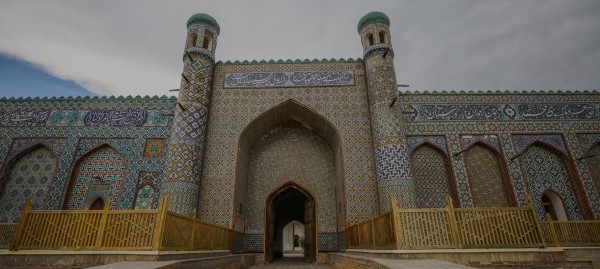
Popular landmarks
Khudoyar khan palace, tomb of the kings - dakhma-i-shahan.
- Video about Kokand
The climate in Kokand is characterized by consistently hot summers and equally stable cold winters. There is not much rainfall here and most of them fall in autumn and spring. Arriving in the summer, do not forget hats and umbrellas, as well as drink more water.
Gifts and souvenirs 🛍
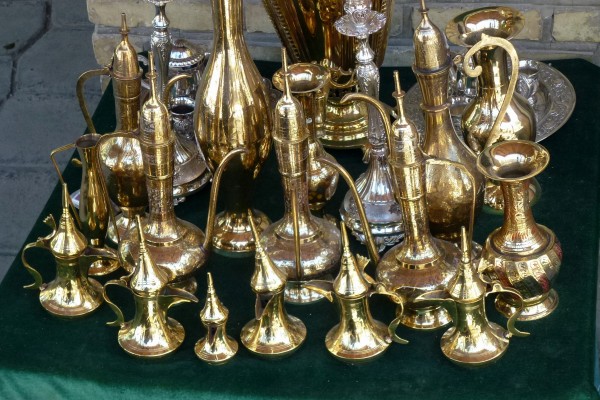
Photo zones 🙋♂️
An integral part of every trip is photography! In this section, we will introduce you to the most beautiful places in this city where you can make the best shots.
P.S. Do not forget that when visiting religious sights of Uzbekistan, it is advisable for women to cover open parts of the body (shoulders, back and legs). Such sights will be marked with symbols ☪️☦️✡️✝️
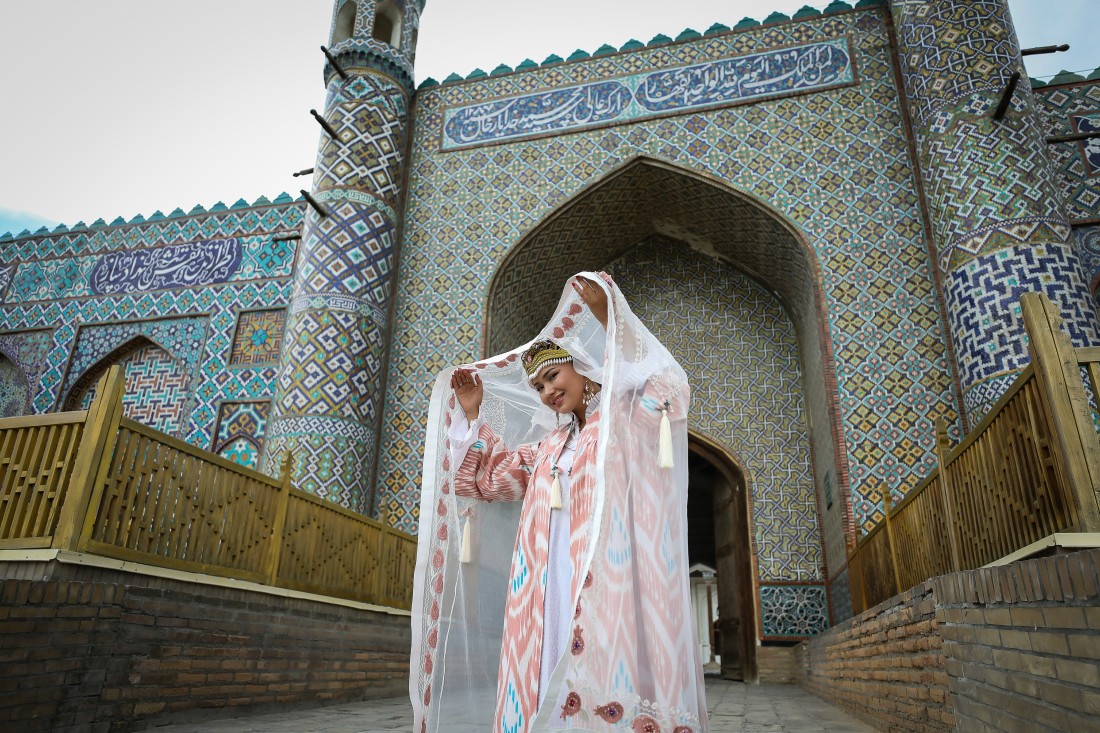
Having become the capital, the city received a second wind and turned into a religious center, in which there were more than 300 mosques. Now the city is called the center of handicraft, as many masters live on its territory. Also, once every 2 years, the "International Festival of Applied Arts" will be held in Kokand.
Fergana region
- About the city
- Gifts and souvenirs
- Photo zones
Other cities in Uzbekistan
Popular destinations for tourists
Uzbek Switzerland
Desert in the Aral Sea
Termez – the Religious Centre
Blooming city
- Travel Guideline
- Tour operator license registry
- Domestic tourism
- Tourism Legislation
- Tourist routes
- Public data
- Tourist arrivals
- Privacy policy
- Terms of Use
- License Agreement
- News & Events
- Uzbekistan News
- Press media
- Tourism Rankings
Workhours: 9:00-18:00, Mn-Fr
For any questions
- Skip to primary navigation
- Skip to main content
- Skip to footer
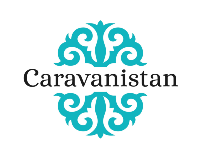
Caravanistan
The Silk Road Travel Guide
If you are heading east from Tashkent, Kokand (Qo’Qon in Uzbek) is worth a stop. The Kokand khanate was an important political force in the early 19th century, and after the Russian conquest in the second half of that century, the cotton boom made some people very rich. That history still lives on in the cityscape of Kokand today.

For people who have seen enough old buildings, the ride from Tashkent offers a number of stops that invite you to explore different sides of Uzbekistan: mountain peaks approaching 4000m, ghost towns, avant-garde art of questionable provenance and everyday village life.
Table of Contents
Known in ancient times as Khavakend, Kokand blossomed in the 19th century when it became the capital of the Kokand Khanate, which encompassed territory from Southern Kazakhstan and Tashkent all the way to Chinese Turkestan . In the middle of the century, Arminius Vambery estimated its circumference 6 times as large as Khiva, 3 times that of Bukhara, and 4 times that of Teheran.
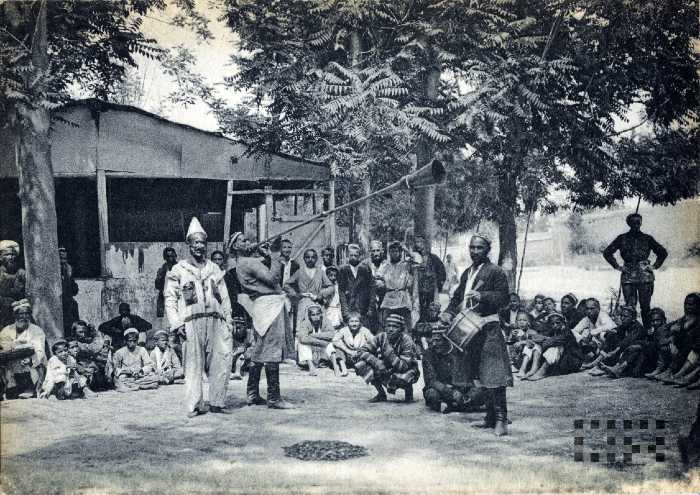
With the arrival of Russian forces, the political dominance of Kokand slowly came to an end, and cotton production was ramped up to the extent that by the 1920s the city came to be known as “Cottonopolis.” The saying went that Andijan made insurrections while Kokand made money.
But that was only half of the story. Under the leadership of the Jadid Mustafa Chokai an important governance experiment known as the Turkestan Autonomy took place here in 1917. As a progressive, democratic, Muslim-majority alternative to the Soviet idea, it was seen as a threat by the Bolsheviks and eventually brutally put down.

Resistance against the new Soviet rule continued for a few more years, with guerrilla attacks carried out by basmachi fighters hiding out in the mountains surrounding the Ferghana Valley . But Kokand’s role as a political force had played out, and Khujand , Fergana and Tashkent rose in importance.
Things to see and do
Khudayar khan palace.
It’s an impressive building dressed up with majolica, carved wooden pillars and painted ceilings. The attention to detail covering such a big space is dazzling, especially if you keep in mind that only 20 rooms remain of the original 114.

No exciting idea has been put forth to use this enormous space, so for now the space is held by yet another regional history museum. The exhibits are of some interest but it’s mainly the interiors that steal the show. A guided tour is cheap and it helps a lot with getting the place to come alive in your imagination.
Friday mosque

The Friday mosque is another testament to the skill of Kokand’s wood carvers, with 98 wooden pillars supporting a summer mosque that surrounds the smaller winter mosque. The sum is 99, the number of names given to Allah in the Quran. The mosque has mostly been shut since independence.
The nearby Kamil Kos madrasa ( Gmaps ) has changed purpose often: most recently, it was a tourist information centre. Mostly, it is a hangout for local women.
Narbuta-Bey / Dasturkhanchi madrasa / Royal cemetery
The Narbuta-Bey madrasa ( Gmaps ) was built by Bukharan architects, something that will be obvious the moment you set sight on it. It is in use for male students. Female tourists can have a peek into life at the Dasturkhanchi madrasa ( Gmaps ), which caters to girls aged 15 to 20.

Behind Narbuta-Bey lies the royal cemetery, where the elegant Modari Khan mausoleum holds the remains of the royal family who did not survive the victory of the emir of Bukhara in 1842. Nodira, wife of the Khan, was especially hated by the emir for her large role in public affairs. She is still revered as one of Uzbekistan’s most important poets and got her own grave next to that of her sons in Soviet times.
Hamza theater
Hamza is a letter in the Arabic alphabet, and it became the moniker for the poet Hakimzade Niyazi. As a Jadid and later an ardent supporter of the Communist revolution, he fought against local traditions he thought backward, and instead promoted fact-based education and women’s rights.

He became one of the leading lights of the early Soviet literary scene, participating in language reforms and writing both moralistic plays and folk songs. He was stoned to death by conservative men in Shohimardon .
The theater ( Gmaps ) only has very occasional performances, but the building itself is a gem. The Soviet-era museum about Hamza has turned into a museum extolling the virtues of Babur, Tamerlan and the astronomer Al-Ferghani. Not a must-see.
Russian new town

Kokand has retained some great examples of colonial architecture, showing off the wealth the cotton industry was generating at a time when entrepreneurial Armenians, Baltic Germans and Bukharan Jews were attracted to Kokand to build their fortunes.
Impressive buildings are the city hall, the cotton bank and the telegraph office on the corner of Turon and Istiqlol streets. Continuing on Istiqlol street are 3 villas that once belonged to German-speaking businessmen. Diagonally across from these stands the Literature museum, housed in another former bank building.
In the street parallel (corner of Mavarounnahr and Aminov streets) you find what remains of the Yusupov Palace. The mega-rich Saint-Petersburg princes had this palace built for the potential visit of the Tsar. Much like the Kagan Palace in Bukhara , no tsar ever stayed.
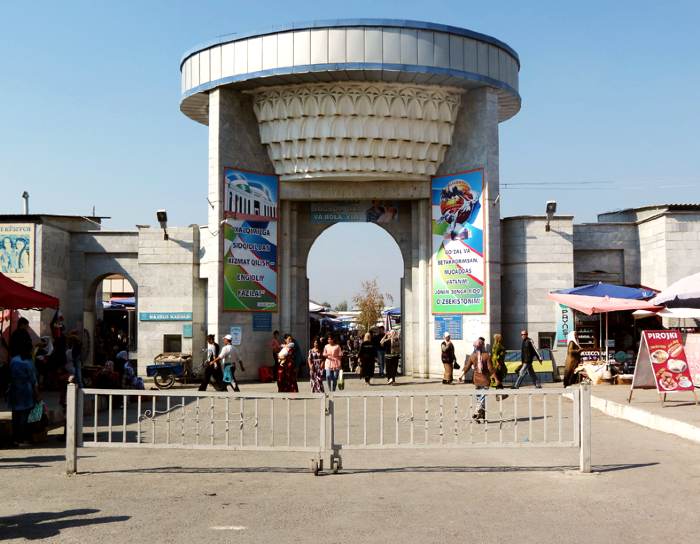
Kokand’s bazaars rival those of Namangan for size. Always worth a visit. The 2 main ones are west ( Gmaps ) and south ( Gmaps ) of the Khan’s Palace.
Between Kokand and Tashkent
For people who have seen enough old buildings, the ride from Tashkent offers a number of stops that invite you to explore different sides of Uzbekistan. Mountain freshness and village life in Chadak, hiking opportunities in the Chatkal range, an abandoned uranium mine in Yangiobod, stolen art and ghost town misery in Angren.
All is revealed in the destinations around Tashkent guide .

The Uchkuprik taxi stand east of town ( Gmaps ) has shared taxis going all over the Ferghana Valley ; they fill up fast and form a competitive alternative to the train, which is more comfortable but, at a similar price and speed, is less flexible in terms of schedule.
Shared taxis to Tashkent (4h – 5$) give you a nice look over the surroundings as you go up and over the Kamchik Pass. On the top, make sure to stop for a ball of kurd and a cup of local godzha (kefir with grains).
The train from Tashkent (4h – 8$) continues to Margilan (1h – 8$) and Andijan (2h – 8$). For Khujand, you need the Konibodom border crossing .
Accommodation
Reasonably priced and with excellent staff tending to your needs, the Silk Road Kokand Hotel is a good choice.
If you want to spend as little as possible: there are no hostels in Kokand, but bargaining in hotels is accepted, and there are a bunch of basic hotels that target local audiences and that aren’t available on booking platforms. We keep track of those hotels in the budget stays in Kokand forum thread .
Travel Guide
- Turkmenistan
Tours & Rental
- Custom tours
- Search all tours
- Pamir Highway tours
- Uzbekistan tours
- Kyrgyzstan tours
- Car & motorbike rental
Visa invitations
- Russia (tourist)
- Russia (business)
Get to know us
- What people say
- Letter from the Silk Road
- Terms & Conditions
- Follow us on Instagram
Do you have a request for this tour operator? Send a message
Not exactly what you were looking for? Check out our custom tour offer: competitive prices, tailored to your needs and wants. Customize your tour
Central Asia, Kazakhstan, Kyrgyzstan, Tajikistan, Turkmenistan, Uzbekistan Tours
Kokand is located in Eastern Uzbekistan at the southwestern edge of the Fergana Valley , about 230 km southeast of Tashkent and close to the border with Tajikistan and is perhaps the most attractive city for a tourist in the Uzbek Fergana Valley. Kokand is the valley’s first important town on the road from Tashkent being a gateway to the region and a stopping spot for many pilgrims. Kokand is one of the most popular cities in Uzbekistan, once the capital of the powerful Kokand Khanate that dominated the whole Fergana and other even larger regions during its hey day.
A traveler on his way to Ferghana from other parts of Uzbekistan, first arrives in Kokand as the Soviet past has cut the most natural way to the mouth of Fergana valley which is part of Tajikistan. Kokand has preserved much of its wealthy history, from the large and magnificent palace of Khudyar Khan to the Juma Mosque and a large collection of madrassas and other old structures that with a bit of imagination will bring the visitor back at least couple of hundreds of years.
Kokand is included in many of our Uzbekistan Tours and Central Asia Tours . Most tourists spend only a day in Kokand but if you have the time, it offers a lot of small secrets to be discovered.
History of Kokand
According to the numerous pilgrims’ descriptions notes, the city of Kokand has been populated at least since the 10th century when the town was known as Khavakend and located on a caravan route between India and China but it was not a major player in the region that time. Kokand village was only fortified by the Shaybanid ruler Shahrukh in the early 18th century. As the influence of his khanate grew, so did the scale of the city.
Defined as the ‘town of the boar’ or the more mysterious ‘city of winds, Kokand lent its name to the powerful 18th-19th century khanate stretching from the Ferghana Valley to Tashkent and all the way to the Southern Kazakh steppes.
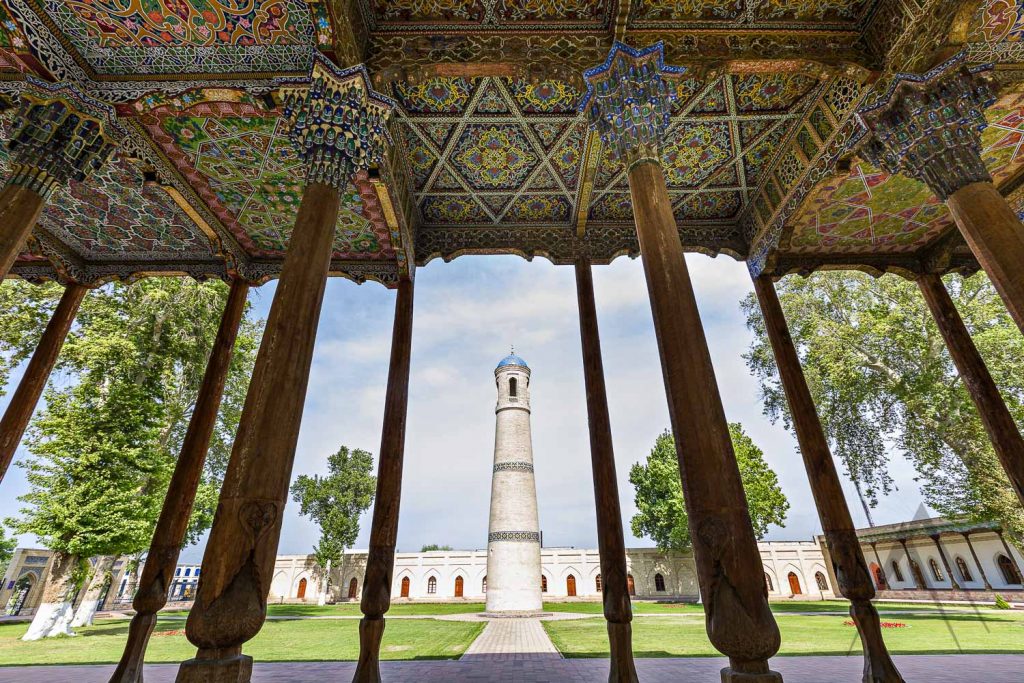
Though young compared to other Ferghana valley cities, Kokand quickly bloomed into a flourishing trading and religious center, competing of the spoils of Central Asia with the khanates of Bukhara and Khiva . During its peak, Kokand Khanate and its capital were Central Asia’s leading powers and a religious center of Central Asia, with its at least 35 madrasas and hundreds of mosques. It also became a wealthy supporter of popular poets, writers, scholars, art and culture. The power of Kokand faded when the Russian empire finally reached Fergana valley in the end of 19th century.
Kokand Sights
Kokand old town center is fairly compact and it is best seen by walking. Most of the sights are located along two main roads or a little walk away in the narrow winding allies of the old town which are also an experience. Between the sightseeing one can always sit down to a restaurant, catch some local delicacies and plan for the next sights to see.
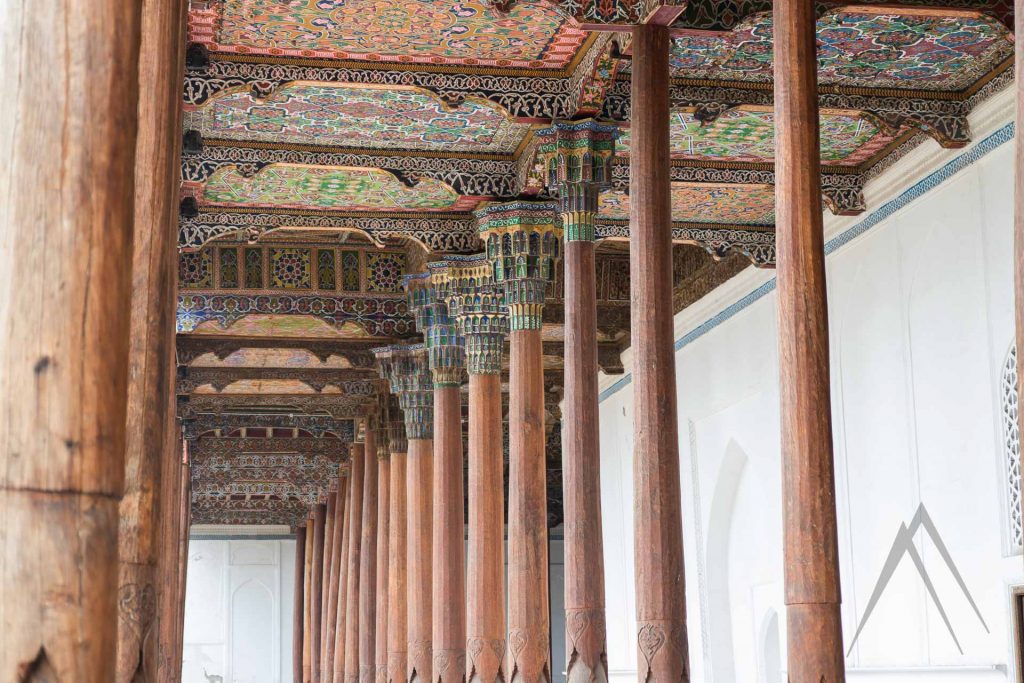
TThe majority of restaurants and shops are just next in a 1 km extent of Istiklol street, running east-west between Muqimi Park and Abdulla Nabiev maydoni square. The mosque-sprinkled old town alleys squeezed between Khamza, Akbar Islamov and Furqat streets constrain for good wandering and it is easy to lose one’s bearings while walking.
Khudayar Khan Palace
Khudyar Khan Palace is Kokand’s most remarkable sight and one of the most glittering royal residences in central Asia’s history. This majestic and notable building serves as a reminder of the last ruler of the Kokand Khanate and is located in the central park called Muqimi. Originally it had as much as 119 rooms and almost half of them were dedicated to the harems of the Khan. Khudayar Khan palace deserves its own page.
KHUDAYAR KHAN PALACE
Dahman-shakhon complex.
Dahman-Shakhon (sometimes Dahkha i Shokhon) complex contains the Narbutabey Mosque, Mir Medressa, Modari-Khan mausoleum and Dakhma-i-Shakhon tomb. It is situated in the old part of Kokand. The Dahman Shakhon complex is located next to a large cemetery straight east from the Khudayar palace, further east from Furqat street making it the perfect sight to find by walking through the old town alleys.
Stone Tablet of Nodira
Nodira was the famed poet, wife of Omar Khan’s widow. She was originally buried in the Modari-Khan mausoleum until she was adopted in the mid-20th century by the Soviets as a model Uzbek woman and moved to this prominent place under a white stone tablet, behind Dakhma-i-Shakhon.
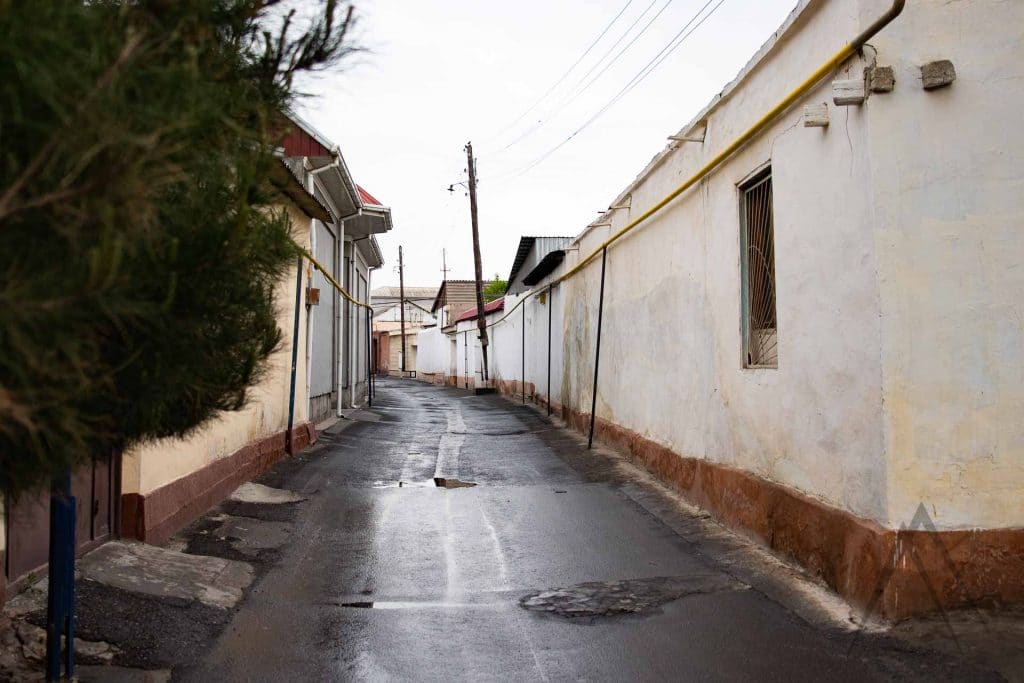
Narbutabey Mosque
The Narbutabey mosque was built in 1799 in the western part of the central graveyard on Chorsu square of Kokand. Norbutabey was a religious person and during his reign, 120 mosques were built in Kokand. Being one of the last mosques, today it’s the biggest and most central in Kokand city.
The area of the mosque and accompanying madrassa is 52m x 72m. After the independence of Uzbekistan, the madrassa opened again as a mosque with 85 students, the number of which has grown to 100 today.

Dakhma-i-Shakhon Tomb
Dakhma-i-Shakhon is a tomb of the Kokand rulers, which sits in the graveyard. It was built during Umar’s reign for the Khans and their family members and is surrounded by a fence. There is also a place for prayer – Ziarathona, where Umar is buried.
The entrance doors are carved with an original Arabic inscription from the Quran and some of Umar-Khan’s poetry. The monument was restored in 1971 by local artisans.

Modari Khan Mausoleum
Modari-Khan is in the central graveyard. It was built in 1825 for Umar-Khan’s mother, on the orders of his wife, Nodira-Begim. Its area is 7.5 x 8.5m and it is one of the most interesting examples of Muslim architecture.

Kokand Juma Mosque and Minaret
Perhaps the Kokand’s most fascinating architectural structure is the Juma mosque (Friday mosque). The most striking feature of the mosque are the long rows of wooden pillars supporting the colorfully decorated roofs. The mosque is established south of Mukimi Park along Turkestan (ex-Lenin) Street, where the road forks beside the Ghuldasta teahouse to cross the Kokand canal bridge that once divided old and new Kokand.

The mosque is centered around a 22 m tall minaret and includes a colorful 100 m long aivan (portico) supported by 98 red-wood columns brought from India and decorated in the diverse color and carving of traditional Ferghana architecture.
Built by Omar Khan between 1809 and 1812 as a magnified version of the rural Ferghana design, it was shut in Soviet times and reopened after restoration in 1989.
The entire Kokand Friday mosque complex has returned to its former Soviet guise as a museum, with one room housing a collection of suzani and ceramics from the region.
Next to the mosque sits the Amin Beg Madrassah, built for one of Madali’s sons in 1830, although often named after Khornol Khozi, the 1913 restorer responsible for the ornamental facade of colored tiles. The madrassah reopened after Uzbekistan’s independence, only to be closed again and reopen as a museum/shop.
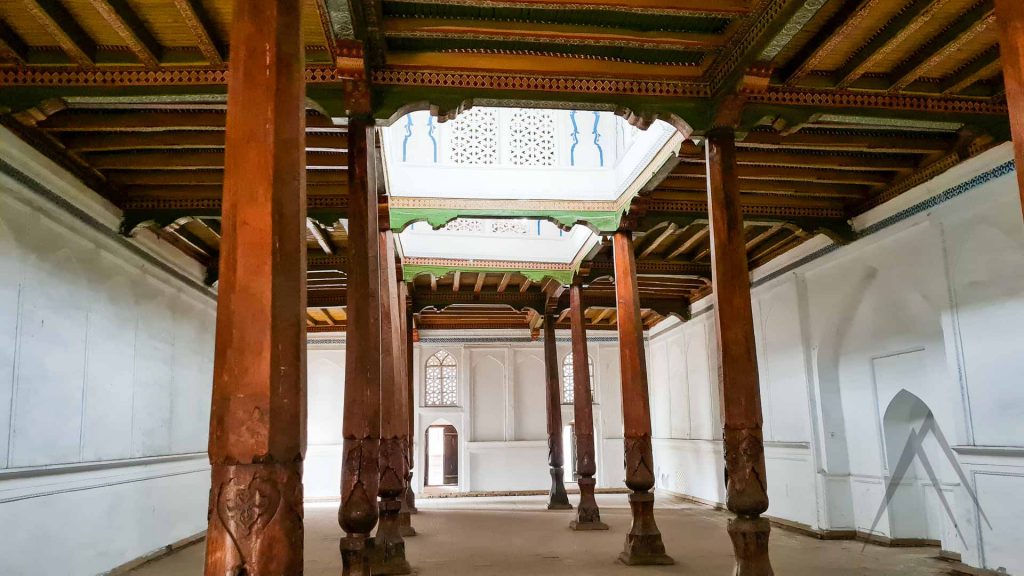
Kokand Zinbardor Mosque
Zinbardor mosque is a good example of the hidden mosques around the old town of Kokand. There are dozens of others also to be found just by wandering around the streets. Zinbardor mosque does not look like much from the outside but houses some original wooden parts from the 18th century.

Khamza House Museum
Khamza house museum was opened in 1989 on the 100th anniversary of Khakim Khakimzade Niyazi’s birth. This museum presents the life story of Kokand’s first Soviet hero, the first national poet of Uzbekistan and the founder of Uzbek Soviet literature Khakim Khakimzade Niyazi. The museum is a three-story structure located at 2 Akbar Islam St, north of Khamza’s statue in Furkat Park and the striking Khamza Musical Comedy and Drama Theatre.
Born in the doctor’s family, Khamza attended an Uzbek school and madrassah before a mixed Russian school expanded his horizons. Early works in the Uzbek classical style dealt with the social themes of a Turkestan slowly waking to progressive ideas. He opened schools in a lifelong push for public enlightenment and soon became an active Bolshevik propagandist. Throwing himself into theatre, he organized a drama company in Ferghana in 1918, performing plays like “The Bey (landlord) and the Farmhand” in which, against a backdrop of social injustice meeting bold revolution, the Uzbek character Gafur welcomes his Russian comrades with good proletarian internationalism.
For the next decade, Khamza was a young republic, teaching and composing. He was an enthusiastic fighter for a new life and unappeasable enemy of obscurantism”. A new play called “The Mysteries of the Paranja” which exposed female freedom touched the sensitive topics after which Khamza’s torture and assassination in 1929.
Khojibek Madrasah

Medrese Sokhibzoda Khazrat
This madrasah was built by the major religious and public figure Sohibzade Hazrat (1827-1860) who was a significant religious and public figure. Hazrat moved to Kokand from Peshawar (Pakistan) in 1825 by the invitation of the Kokand Khan. Later in this madrassah housed poets like Muhammad Aminhuja Mukimi and Muhyu Hukandi.

The madrassah structure consists of three courtyards including 24 rooms and tiny minaret. Two of the yards are in the straight line from the west to east and the third courtyard is linked to these yards by a corridor from the north. The main facade of the madrasah is situated on the west part of the northern courtyard and the entrance to the madrasah is through a dome named “darvozahona”.
Elegantly carved gate of the madrasah was produced by the master Iskanda Hodja. The structure is split into the three-parts that are suitable madrassahs requirements. Each yard matches a certain direction of education such as adno-primary, avsat-secondary, alo-higher education. The madrasah is built from brick and the walls of the rooms are covered with ganch (plaster).
A house-museum of Muhammad Aminhuja Mukimi is located close to the entrance. There is also an exhibition of the belongings of the poet, some household things as well as his work.

Tours including Kokand
Central asia in-depth tour, the five stans of central asia, uzbekistan group tour including fergana valley, uzbekistan pilgrimage tour.
Please contact us if you want us to organize a custom tour for you including Kokand!
Travel to Kokand
The nearest major airports are located in Fergana city in Uzbekistan or Khujand in Tajikistan. Kokand airport which is 10 km from the city center remains dormant.
The train station is located in the southwest part of Kokand and has departures to Tashkent at least every other day. The railroad goes through the newly built tunnel that crosses the mountains between Kokand and Tashkent. Before the only railroad was through Tajikistan.
The long-distance bus station for all Fergana valley destinations is at 102 Furkat St beside the main bazaar. Services to Ferghana/Margilan take two hours, to Andijan three. Shared taxis to Andijan are available and take 1,5 hours. There are no buses to Tashkent, so you should negotiate hard for a shared or private taxi or minibus taking the Kamchik tunnel route for about 4 hours.
Sights & destinations near Kokand
Isfara (tajikistan), batken (kyrgyzstan), all tajikistan sights & destinations, knife workshops in chust, rishton (pottery town), khujand (tajikistan), all kyrgyzstan sights & destinations, osh (kyrgyzstan), all uzbekistan sights & destinations.
Page updated 9.1.2022
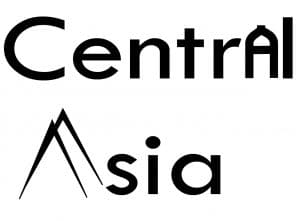
- Privacy Overview
- Strictly Necessary Cookies
- 3rd Party Cookies (Google Analytics)
- Cookie Policy
This website uses cookies so that we can provide you with the best user experience possible. Cookie information is stored in your browser and performs functions such as recognising you when you return to our website and helping our team to understand which sections of the website you find most interesting and useful.
Strictly Necessary Cookie should be enabled at all times so that we can save your preferences for cookie settings.
If you disable this cookie, we will not be able to save your preferences. This means that every time you visit this website you will need to enable or disable cookies again.
This website uses Google Analytics to collect anonymous information such as the number of visitors to the site, and the most popular pages.
Keeping this cookie enabled helps us to improve our website.
Please enable Strictly Necessary Cookies first so that we can save your preferences!
More information about our Cookie Policy

About Uzbekistan

The old town looked young now, nondescript in its grid of Russian streets, but its past drenched it black, and suffused its most innocent inhabitants for me. It had been called Khoh-kand, 'town of pigs', from the boars which infested its marshes, but in time the name grew other connotations. By the start of the nineteenth century, together with Bukhara and Khiva, its khanate had carved up the core of Central Asia, ruling from the rich Fergana valley to the steppes beyond Tashkent. Its citizens were known for cowardice and cruelty. Their khans were murderers and debauchees. Even their subjects loathed them. Their land was stubbornly fruitful -it exported wool, silk, fruit, hides and opium - but within its eight-mile battlements the town eventually became an arsenal shrunk among fields and cemeteries, and its diseased waters turned the inhabitants cretinous with goitre. The Russians absorbed the khanate in 1876, after routing an army of 50,000 for the loss of six dead, and abolished it wholesale.
Yet a moment of tragic distinction visited the town in 1918. In the chaos of the Revolution a Moslem congress assembled here to set up a rival government to the Bolshevik soviet in Tashkent. It was a unique sign of united national sentiment in Central Asia, and a first and last attempt to achieve democratic unity by peaceful means. Claiming that it spoke for the masses, Kokand appealed to Lenin in vain. The Tashkent Bolsheviks attacked the ill-armed town, slaughtered some 14,000 citizens, indulged in an orgy of rape, and burnt or mined every house and mosque. Then a tremor of fury and realisation surged through the Moslems, and within a week the whole region was in flames. It was from this moment that the basmachi guerrilla movement arose to plague the Red forces - and continued fighting for another five years - and that Moslem faith in Communism was lost.
The Lost Heart of Asia by Colin Thubron
As the valley’s first significant town on the road from Tashkent, Kokand is a gateway to the region and stopping point for many travellers. With a historically interesting palace and several medressas and mosques, it makes for a worthwhile half-day visit. The city is, by Uzbek standards at least, a modern conurbation. Some 230km southeast of Tashkent and close to the border with Tajikistan, it is perhaps the most attractive city in the Fergana Valley. Kokand has maintained much of its rich history, from the vast and sumptuous palace of Khudyar Khan to the Juma Mosque and inevitable (but nonetheless interesting) collection of madrassas, and it's unfortunate that its slightly out of the way location means that many foreign tourists miss it from their itinerary entirely. If you have the time, make sure you visit Kokand.
Though there has been habitation in this area since the 10th century, as numerous travellers' accounts attest, Kokand village was only fortified by the Shaybanid ruler Shahrukh in the early 18th century. As the influence of his khanate grew, so did the scale of the city. Defined as the 'town of the boar' or the more enigmatic 'city of winds', Kokand lent its name to the powerful 18th-19th century khanate stretching from the Ferghana Valley to Tashkent and the southern Kazakh steppes. Kokand khanate was the valley’s true ‘hotbed’ in those days – second only to Bukhara as a religious centre in Central Asia, with at least 35 medressas and hundreds of mosques. Though young compared to other Ferghana towns, Kokand quickly blossomed into a prosperous trading and religious centre, contesting the spoils of Central Asia with the khanates of Bukhara and Khiva.
Around 1710 the Shaybanid Shahrukh established his Uzbek Min tribe as an independent principality in the western part of Ferghana. He built a citadel in his capital, the village of Kokand, as did his son Abd al-Karim. In 1758 Shahrukh's grandson Irdana was forced to recognize Chinese suzerainty that extended into the rule of Abd al-Karim's grandson Narbuta Beg, from 1774 to 1798. Kokand's authority was still limited to western and central Ferghana when Narbuta's son Alim succeeded him. Combining great ambition with ruthless efficiency, Alim Khan hired a mercenary army of Tajik highlanders to curb hostile tribal chiefs and dissenting dervish orders. He secured the whole valley and took Khodjent and Tashkent, before his assassins set his brother Omar on the throne in 1809. A poet who fostered cultural and religious life, Omar Khan nevertheless pursued expansion, taking Turkestan in 1814 and building steppe fortresses against the Kazakh tribes.
Omar's son Mohammed Ali (Madali Khan) was only 12 at his accession in 1821. During his reign, the khanate reached its greatest power and extent, frequently interfering beyond the Pamirs in Chinese Turkestan. Great Game diplomacy acknowledged Kokand's importance, though Russian mishandling of envoys paved the way for open enmity. British Officer Captain Arthur Conolly stayed for two months in 1841 in a fruitless attempt to persuade Madali to resolve differences with the neighbouring khanates. He left for Bukhara on the ill-fated trip to rescue fellow officer Colonel Charles Stoddart. Despite the best efforts of Omar's widow, the poetess Nadira, their son chiefly excelled at cruelty and debauchery, giving Emir Nasrullah of Bukhara the excuse to take Kokand and their lives in 1842. Preferring their own despots, Ferghana's people soon expelled Nasrullah and established Madali's cousin Shir Ali, but the next two decades saw the khanate riven by internecine warfare, worsened by Bukharan and Russian incursions. Shir Ali's son Khudayar ruled from 1845, amid the bloody conflicts of the Uzbek Kipchaks and the Persianized urban population. Towers of skulls marked the battlegrounds.
Nasrullah's second entrance into Kokand in 1858 replaced Khudayar with his brother, but once restored in 1865, Khudayar immediately came under the sway of Nasrullah's successor. The rivalry of the khanates fatally undermined resistance to the common enemy, tsarist Russia. Since 1850 Kokandi troops had fought the infidel invaders with greater zeal than their Bukharan or Khivan counterparts, but force of numbers and arms toppled their northern forts one by one. Appeals for British military assistance met no response. Tashkent fell the following year, Khodjent a year later. The khanate was reduced to the valley from which it had sprung. At this time Kokand's most infamous export, Yakub Beg, one-time lord of Tashkent, seized Kashgar from the Chinese to begin a decade of terror.
A commercial treaty in 1868 left Khudayar a Russian vassal, yet free to continue building his lavish palace by squeezing more taxes from a shrunken proletariat. Visitors were impressed with this city of 80,000 people, whose 600 mosques and 15 madrassah, teaching 15,000 students, bestowed a reputation second only to holy Bukhara. American diplomat Eugene Schulyer visited in 1873: " Everywhere around are clay roofs, half hidden in luxuriant verdure, and surrounding all the brilliant green of the gardens and orchards. " The Russians had left native justice in place: " When a criminal is to be put to death-and executions are very frequent there - he is taken through the streets of the bazaar, the executioner following behind him, while the crowd hoot and pelt him with stones. Suddenly, without a word of warning, when the executioner thinks the spectacle has lasted long enough, he seizes him by the head, thrusts the knife into his throat and cuts it, and the body sinks to the ground, where it is left for some hours before it is carried away and the blood is covered with sand. "
Insurrections against the puppet khan spread across the valley, forcing Khudayar into Russia's embrace in early 1875; first Tashkent, then Orenburg and death in exile. His kinsman Pulad Khan's anti-Russian stance provoked the annexation of Kokand in August by Generals Kaufmann and Skobelov. By March 1876, after fierce fighting, the khanate was declared the province of Ferghana in Russian Turkestan. Tsar Alexander II had " yielded to the wishes of the Kokandi people to become Russian subjects ". It was the end of the history of the Kokand Khanate, which had existed almost 170 years.
After Kokand became the part of Russia, the Khan's palace was turned into a fortress, and new highways were laid through resident quarters – mahallas, along which buildings of European architecture were constructed. The city quickly became a major center of capitalist activity in Turkestan, surpassing even Tashkent in number of banks. All monuments of the khan period, dating from 18-19th centuries preserved perfectly in today Kokand.
Colonial rule added a Russian town of wide avenues and increased cotton and silk production, yet rebellion was never far away. In the wake of revolts against the World War I draft and the Russian Revolution, Mustafa Chokayev in late 1917 established in Kokand the Provisional Autonomous Government of Turkestan, a progressive, nationalist, Muslim alternative to the Tashkent Soviet. Branded counter-revolutionary by the Bolsheviks, this last hope for democratic self-governance was snuffed out by the Red Army. Breaching the walls of the old Muslim city on February 18, the attackers began a three-day rampage of rape, plunder and arson, leaving 14,000 slaughtered and old Kokand ablaze. Chokayev escaped to Bukhara and then Paris, as his armed chief Irgash Bey channelled Ferghana's outrage into Holy War. From their mountain strongholds basmachi groups harassed the Red Army throughout the early years of Soviet rule.
The Khan’s Palace stands in the central Muqimi Park. Most restaurants and shops of interest are on or just off the 1km stretch of Istiklol running east–west between Muqimi Park and Abdulla Nabiev maydoni. The mosque-sprinkled old-town lanes squeezed between Khamza, Akbar Islamov and Furqat make for good wandering. If you walk Kokand's streets today, you will find only a polite, subdued Uzbek town, its old centre hedged by colonial avenues, bearing little resemblance to Bukhara.
Nevertheless, traditionally conservative Kokand is changing fast as money flocks in from somewhere. A few high-end boutiques have sprouted on the spruced-up main street, Istiklol, and all central squares and parks received massive makeovers. The town still shuts down by about 9pm.
Kokand airport, 10 kilometres from the city centre, remains dormant, so most tourists fly into the valley via Ferghana city. The train station in the southwest has departures to Tashkent every other day via Tajikistan but are very inconvenient as you'll need a Tajik transit visa and multiple-entry Uzbek visa. The long-distance bus station for all valley destinations is at 102 Furkat St beside the main bazaar. Services to Ferghana/Margilan take two hours, Andijan three. Share taxis to Andijan are available and take 1.5 hours. There are no buses to Tashkent, so bargain hard for a share or private taxi minibus taking the Kamchik tunnel route (US$10, 4 hours). Tashkent-bound taxis crowd the bus station or the Krug roundabout 5 kilometres north of town, though it is sometimes possible to get a ride from the main bus station, too. Getting around Kokand is straightforward. The most useful buses are No 8 between Hotel Kokand, the railway and bus stations, also passing the Khudyar Khan Palace and the Juma Mosque; and No 14 between the airport, railway station and Hotel Kokand. Minibuses No 2 and No 4 link the Dekhon Bazaar with Hotel Kokand; minibuses No 15 and No 40 go north from the bazaar to the Juma Mosque.

The national airline "Uzbekiston Havo Yullari" connects major cities of the country with the capital.

Railroad crossings. In Uzbekistan there are 3400 km of rail routes connecting Tashkent with Termez, Samarkand, Bukhara, Fergana Valley and Nukus.


[email protected] | [email protected]

- Information about Uzbekistan
- Remarkable sights
- Tours to Uzbekistan
- Visa to Uzbekistan
- Hotels in Uzbekistan
- Uzbek national cuisine
- Gifts of Nature
- Conference halls in Uzbekistan
- Restaurants of Uzbekistan
- Airline tickets booking
- Transport service in Uzbekistan
- Railways in Uzbekistan
- Photo of Uzbekistan
- Information about Kyrgyzstan
- Tours to Kyrgyzstan
- Visa to Kyrgyzstan
- Hotels in Kyrgyzstan
- Transport services
- Photo of Kyrgyzstan
- Information about Kazakhstan
- Tours to Kazakhstan
- Visa to Kazakhstan
- Hotels of Kazakhstan
- Photo of Kazakhstan
- Information about Tajikistan
- Tours to Tajikistan
- Visa to Tajikistan
- Hotels of Tajikistan
- Transport service
- Photo of Tajikistan
- Information about Turkmenistan
- Tours to Turkmenistan
- Visa to Turkmenistan
- Hotels of Turkmenistan
- Photo of Turkmenistan
- Information about China
- Tours to China
- Chinese Holidays And Festivals
- Photo of China
Main sights of Kokand

Central Asia Travel
- Site navigation
- Group tours
- Heritage & Cultural tours
- Adventure travel
- Pamirs` Summits
- Khan-Tengry Peak
- Pobeda Peak
- Communism Peak
- Khan-Tengry Peak + Lenin Peak
- Corporative (incentive), business tourism and VIP tours
- Trekking tours
- Christmas & New Year tours
- Hotels of Uzbekistan
- Hotels of Kyrgyzstan
- Hotels of Tadjikistan
- Hotels of Azerbaijan
- Articles and publications
- About us / Contacts
- Our vacancies
Client reviews
In central asia.

in the Pamir Mountains

Central Asia

Airline tickets

CONTACT DETAILS
THE SILK ROAD TRAVEL PACKAGES & TOURS

- Uzbekistan Phone: (+998) 71 20002 99 [email protected]
- Kyrgyzstan Phone: (+996) 55665 77 99 [email protected]
- Russia Phone: +7 (499) 50498 99 [email protected]
In connection with the frequent failures in work of our hosting company, we kindly ask you to put in a copy one of the addresses below to ensure that we receive your letter:
Search on the site
Whats new on the site.

publications

on Facebook
Competitions.

of group tours

Download our
Calendars 2016, weather information.

Copyright © 2007-2023 Central Asia Travel. All rights reserved. No part of this website may be reproduced without written permission of the copyright owner.
TOUR SEARCH
Send request
Top 20 Places to See in Kokand, Uzbekistan
- Abdulla-Khan Madrasah
- Chorsu Bazaar
- Jami Mosque
- Kalta Minor Minaret
- Khudoyar Khan Mausoleum
- Khudoyar Khan Mosque
- Khudoyar Khan Palace
- Kokand Historical Museum
- Narbuta-Biy Madrasah
- Norbut-Biy Madrasah
- Palace of Alla-Kulli-Khan
- Palace of Khudoyar-Khan
- Chatkal National Park
- Kizilsu-Karakalpakstan National Park
- Nuratau-Kyzylkum Biosphere Reserve
- Sugraly Reserve
- Ugam-Chatkal National Park
- Zaamin National Park
- Zarafshan National Park
- Andijan
- Angren
- Bukhara
- Chirchiq
- Fergana
- Guliston
- Jizzakh
- Karshi
- Khiva
- Kokand
- Margilan
- Namangan
- Navoiy
- Nukus
- Qarshi
- Samarkand
- Shakhrisabz
- Tashkent
- Termez
- Urganch
- Afrosiab Museum
- Amir Timur Museum
- Bibi-Khanym Mosque
- Char Minar
- Chashma Ayub Mausoleum
- Hazrat Imam Complex
- Kalyan Minaret
- Kok-Gumbaz Mosque
- Lyabi-Hauz
- Navoi Theater
- Nur-Astana Mosque
- Nurata
- Registan Square
- Shah-i-Zinda
- Tashkent Metro
- Tashkent TV Tower
- Tashkent Zoo
Explore Kokand
Plan your trip to kokand: best of kokand tourism.

Essential Kokand

- Silk Road Kokand Hotel
- Asmald Palace
- Reikartz Kokand
- Rohat Hostel
- Istiklol hotel
- Asmald Palace Restaurant
- Kinza Restaurant
- Bellissimo Pizza
- Leaf Coffee
East of Uzbekistan , in the Fergana Valley , is the old city of Kokand . It historically served as a key administrative hub for the Kokand Khanate, which in the 19th century governed over a sizable portion of Central Asia. The various ancient landmarks and monuments in Kokand, including palaces, mausoleums, mosques, and madrasas, serve as a testament to the region’s rich cultural past. The city is particularly well known for its traditional crafts, which are still made by local artists, such silk weaving and pottery.
Religion of Kokand:
Islam has been the main religion in Kokand for many years, and the city has a rich religious history. The city is home to a large number of mosques, madrasas, and mausoleums that showcase the architectural and cultural impact of Islam. The Khudoyar Khan Palace, which has a stunning mosque with elaborate tile work and calligraphy, is one of Kokand’s most prominent religious attractions. The Jami Mosque, one of the city’s oldest and largest mosques, was built in the 18th century, and it is a significant place of worship. Another noteworthy Islamic institution in Kokand is the Narbuta-bey Madrasa, which is renowned for both its stunning architecture and its traditional Islamic teachings. The Madari Khan Mausoleum is one of the city’s several medieval mausoleums and monuments and the Modarikhan Mausoleum, which are popular pilgrimage sites for Muslims.

Thriving Economy:
In the Fergana Valley of Uzbekistan, Kokand is a significant economic hub with a diversified economy focused on manufacturing, agriculture, and services. Agriculture plays a significant role in the local economy; the city is well-known for its cotton, fruits, and vegetable production. A variety of small and medium-sized companies, including textile mills, food processing facilities, and furniture makers, are also based in Kokand. The city serves as a major hub for cross-border trade and business due to its advantageous location close to the borders of Tajikistan and Kyrgyzstan. The Uzbek government has been working to expand the region’s infrastructure and draw in international investment recently, which has helped the city’s economy grow and thrive. However, like many other cities in Uzbekistan, Kokand still faces challenges such as unemployment, underemployment, and poverty. For more information about the Kokand economy, please visit here .
Political Landscape:
The national government in Tashkent oversees Kokand, a city that is a part of the Republic of Uzbekistan. A local government council is in charge of running the city and is in charge of administering public services, carrying out government directives, and supervising neighborhood improvement initiatives. The national government appoints the mayor to lead the council. To make sure that the city is effectively governed and that its requirements are met, the mayor collaborates closely with other local authorities and representatives from the national government. The Uzbek government has carried out a variety of political and economic changes recently with the goal of enhancing governance, raising transparency, and luring outside investment to the area. As a result of these measures, political stability has grown. and economic growth in Kokand and other parts of Uzbekistan.

Vibrant Culture of Kokand City:
Kokand’s art, architecture, music, and customs are all products of a rich cultural past. The city is renowned for its traditional arts and crafts, which have been handed down through the generations of local artists. These include silk weaving, embroidery, and pottery. Many of these products are displayed at neighborhood markets and stores where tourists may buy handcrafted goods and mementos.
Numerous historical sites and cultural organizations can be found in the city, including the Khudoyar Khan Palace, which includes a museum devoted to the history and culture of the Kokand Khanate. Other noteworthy sites are the Norbuta-bey Madrasa, known for its elaborate construction and traditional Islamic teachings, and the Jami Mosque, which showcases exquisite tile work and calligraphy.
Kokand’s cultural legacy also includes music and dance, with regional artists and performers presenting traditional genres and instruments like the doira and rubab. A variety of cultural festivals and events are also held in the city throughout the year, such as the Kokand Silk and Spices Festival, which honors the city’s long tradition of silk manufacture and commerce.
In general, Kokand’s culture is a synthesis of influences from Uzbek, Tajik, and Kyrgyz peoples, making it a distinctive and exciting location for travelers desiring to experience Central Asia’s rich cultural legacy.
Must-Visit Attractions in Kokand:
Khudoyar Khan Palace – a stunning palace complex that was once the residence of the Kokand Khans.
Jami Mosque – one of the largest and oldest mosques in the city, with beautiful tilework and calligraphy.
Norbuta-bey Madrasa – a historic Islamic school with impressive architecture and traditional teachings.
Kokand Museum of Regional Studies – a museum housed in a former Russian consulate building that showcases the history and culture of the Kokand Khanate.
Kamol-Kazy Madrasa – a beautifully preserved Islamic school that dates back to the 19th century.
Modari Khan Mausoleum – a historic shrine and pilgrimage site that is said to house the remains of a legendary local female leader.
Narbutabey Madrasa – a well-preserved Islamic school that is known for its impressive architecture and intricate tile work.
Kokand Chorsu Bazaar – a bustling market where visitors can find a variety of local produce, handicrafts, and souvenirs.
Palace of Khudayar Khan – a historic palace that is known for its impressive architecture and intricate interior decoration.
Khamza Museum – a museum dedicated to the life and works of the prominent Uzbek writer and poet, Khamza Khakimzade Niyazi.
Want to know more tourist attractions of Kokand, please visit here . To explore other cities of Uzbekistan click here


The 6 best places to visit in the Fergana Valley Uzbekistan – The Complete Travel Guide
Here’s the complete Fergana Valley travel guide, including places to visit in Fergana, if the Fergana Valley is safe and if it’s worth a visit, info on how to get around and where to stay, and much more!
The Fergana Valley lies in eastern Uzbekistan and is the country’s agricultural beating heart. The area is steeped in history and has yielded so much to Central Asia, including its ties with the Silk Road.
The valley was once part of the main Silk Route between Samarkand and Kashgar (China). It’s said people in the Fergana Valley have produced silk for around 1,000 years (yep, that’s a lot of worms), while its bazaars continue to entice people in with beautiful stalls.
The valley’s towns are predominantly of Uzbek heritage (the most densely populated part of Uzbekistan) so if you really want to get to know its beautiful people and authentic traditions, the Fergana Valley is the place to learn. It’s also an incredibly beautiful place as it’s home to parts of the Tian Shan Mountains and the Gissar-Alai range.
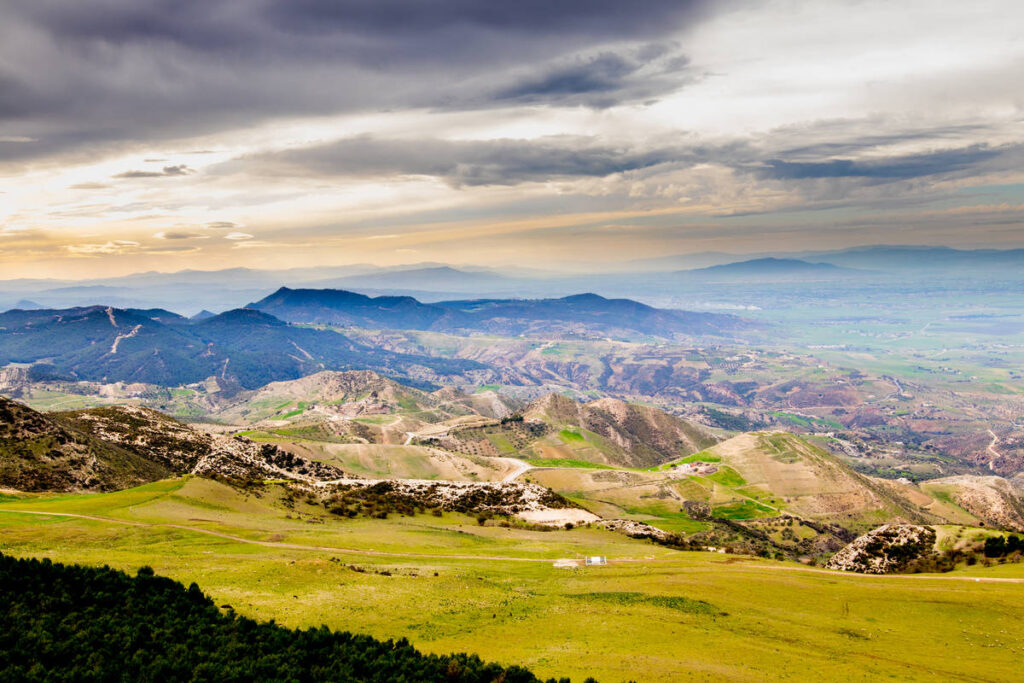
At times, its contested borders with Tajikistan and Kyrgyzstan have been peppered with conflict, but we’ll get to that later. Here is everything you need to know about traveling to the Fergana Valley in Uzbekistan…
Tip: See my Uzbekistan Travel Page for a complete overview of all my travel guides and blog posts about Uzbekistan!
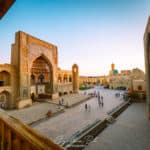
Uzbekistan Travel Guide: 18 u s e f u l t h ings you need to know before you go
Disclaimer: This posts might contain affiliate links, meaning that if you make a purchase through these links, I may earn an affiliate commission. Thank you for helping to support this website!
Plan your trip to Uzbekistan
- 18 important things to prepare your trip to Uzbekistan
- 26 beautiful places to visit in Uzbekistan
- Uzbekistan Itineraries: 1 to 4 weeks in Uzbekistan
- How to travel aroun d Uzbekistan by train
- What to pack for Uzbekistan
- Uzbekistan Safety Guide
- Uzbekistan Money Guide
- Tours & Experiences: Guided City Tours in Uzbekistan, Adventure Tours in Uzbekistan
TABLE OF CONTENTS
Where is the Fergana Valley located?
The Fergana Valley sweeps across eastern Uzbekistan and also dips into Kyrgyzstan and Tajikistan . Technically, it’s not an actual valley; it’s a basin of flat plains between the northern Tian Shan Mountains and the southern Gissar-Alai range. The Syr Darya River nourishes the valley, while other canal systems have been created to irrigate the land.
From Tashkent in Uzbekistan, the valley lies about 250km southeast of the capital. Looking at a map of the valley, there are five main districts: Ferghana, Andijan, Namangan, Khujand (Tajikistan), and Osh (Kyrgyzstan) which cover an area of 22,000 square km .

During the time of the Silk Road, the area’s flat lands and mild climate were a welcome sight to weary traders who had battled the merciless mountains. Ancient Chinese writers said the valley was considered a ‘resort’ for caravans who spent days resting there.
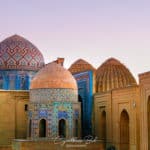
Top Things to do in Samarkand – Samarkand City Guide
What is the Fergana Valley Uzbekistan known for?
The Fergana Valley is known for its soil. No, I’m not having you on, the soil is hot stuff here! Along with its mild climate, the land yields a growing season of around 240 days per year. Basically, it’s the Fertile Valley.
The valley is the largest provider of food in Uzbekistan and it doesn’t stop there. It’s a huge cotton and silk provider. It’s said the people living in the Fergana Valley have produced silk for around 1,000 years, with plenty of factories showing the process of spinning threads. The area is also a hotbed for minerals and mining resources such as oil, coal, gold, copper, and mercury.

The Fergana Valley was once part of the main Silk Route between Samarkand and Kashgar (China) so it became a place of rest for Silk Road traders to recuperate. I think it’s cool how the area today still proudly recognizes its traders, with countless markets and handmade pottery stalls.
The area is also the most traditional and religious part of Uzbekistan, so talking to people in the valley is a valuable way to learn about the country’s rich history and culture.

Sadly the valley is also known for one of Asia’s worst oil spills. On 2nd March 1992, one of the oil wells in Mingubak blew open , eventually letting out around 2,000,000 barrels of oil. Scientists have since said that the overall impact of the oil spill had a small impact on the environment.
Is the Fergana Valley safe?
While most cities and towns in Uzbekistan are considered extremely safe for tourists , the border areas of the country are not always safe and should be avoided unless it’s for a border crossing. There have been a few violent disputes and several gunfire exchanges at contested borders.
So yes, the main part of Fergana Valley is super safe for travelers but you must be incredibly sensible about crossing land in the valley. It’s also important to understand why conflict does happen, its whereabouts and why.
It’s so easy to get swept up in horrifying news headlines especially when the word conflict is chucked around, so let’s delve some more into that.

Is Uzbekistan safe? 1 4 useful safety tips
Under the Soviet Union, borders were established between Kyrgyzstan , Tajikistan , and Uzbekistan . Prior to the Soviet Union, there were many different nomadic tribes living in the valley.
When republic borders were created, people living in the valley, especially those in different enclaves, felt their ethnicities were being forgotten and others struggled to access their home countries. After the Union’s collapse, the Fergana Valley’s borders became increasingly disputed and clashes broke out.
Conflict is exacerbated by the Fergana Valley’s resources and agricultural prospects. Different ethnic enclaves and those in the three countries often struggle to agree on which land is theirs to farm on.
Another lousy factor adding to all of this is due to the Fergana Valley being a landlocked area and with climate change raising the temperatures, the water resources are dwindling rapidly. This means farmers have competition with water allocation which also causes disputes.
Don’t let the above scare you. While there is nowadays still some tension (mostly from the Kyrgyz side), the region has been stable since 2010 . Travelers are super welcome in the Fergana Valley .
You’ll notice that the locals are some of the friendliest and most hospitable people you’ll meet in Uzbekistan. The main thing is to research recent disputes and if you’re heading off the beaten track, ensure you’re not wandering into a contested border.
Need Travel Insurance for Central Asia ? I use and highly recommend HeyMondo Travel Insurance . As a reader of Journal of Nomads, you get a 5% discount off your insurance plan!

Is the Fergana Valley worth a visit?
This is actually a question for you!
When organizing a trip, I always ask myself: what do I want from this? Some are drawn in by history, the sea, or the city bustle (mostly I’m sucked in by the promise of hiking). The Fergana Valley has plenty to sate your appetite for history and there is so much nature to delve into. If you’re after the more obvious Silk Road spots , this isn’t the place for you.
However, if you want a real taste of Uzbekistan and its beautiful crafts and traditions, you’ll learn so much here. It’s truly a tapestry of so many hiking spots, ancient mosques, and madrasas and seeing Uzbek’s industries working away.

The 26 most beautiful and best places to visit in Uzbekistan

When to visit the Fergana Valley?
The best time to visit the Fergana Valley is in spring (March – May) and autumn (September – November). Like most of Central Asia, the Fergana Valley has a dry and arid climate during warmer months and its winters tend to pack a frosty punch.
In March, the average temperature hits 20 degrees which then soars to a sizzling 35 degrees in June, July, and August. Yep, it’s enough to melt your marbles. Obviously, this will vary in higher altitudes and lower lush pastures.
Something to think about is if you’re exploring the Fergana Valley, you won’t really be in the shade of mausoleums and city buildings. It will be a lot of meandering out in nature and traveling from place to place. Hiking and getting about in sweltering temperatures is not advisable (especially if you get hissy and snappy in the heat) so I’d stick to planning your trip in spring or autumn.
In spring, the festivities of Navruz will be in full swing. Navruz marks the start of the season and it has been celebrated in Uzbekistan for more than 2,000 years. It’s no surprise that the national holiday is one of the country’s favorite celebrations. The event is always on the 21st of March and festivities are spread out over the week.
Another beautiful time to see the Fergana Valley is in autumn. With the area’s vast agricultural produce, the bazaars burst with fresh fruit and vegetables during harvest season.
Generally speaking, the tourist months are also based on spring and autumn. If you’re traveling in winter, you may need to do a little more planning ahead with guesthouses and available transport.

How to get to the Fergana Valley?
Fergana valley tours.
If you’re limited in time and only have 1 or 2 days to visit the Fergana Valley, the easiest and quickest way is to get there would be by booking a guided tour . The advantage of booking a tour is that you’ll learn a lot about this fascinating region’s culture and history.
Here are a few tours I recommend:
How to get to the Fergana Valley from Tashkent
I’ve written a handy guide with pretty much eveeeerything you need to know about Tashkent here and daily trips. Heads up, there is no direct public bus service from Tashkent to the Fergana Valley.
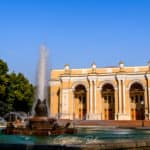
Top Things to do in Tashkent – Tashkent City Guide
From Tashkent to Fergana Valley By Train
There’s a daily train leaving from Tashkent to Kokand , one of the first destinations you may head to in the Fergana Valley.
From Tashkent to Fergana Valley By shared taxi
Taking a (shared) taxi is a good option if you have an exact town in mind within Uzbekistan. I recommend installing the Yandex Taxi app on your phone.
This app allows you to order a taxi to easily get around and shows you the rate in advance. They’ll also save you the hustle of bargaining for a good price. This could be helpful if you’re considering doing the day trip on a shoestring budget.
From Tashkent to Fergana Valley By Organized tour
The Fergana Valley Tour is a great day tour for learning more about Uzbekistan’s famous handicrafts from the masters themselves. Between visits to the Fergana Valley’s most famous sights, you’ll stop to meet artisans and master craftsmen in their workshops. The tour offers a pick up from Tashkent.
If you have more time, you can also go on a 2-day organized tour in the Fergana Valley .
FROM TASHKENT TO FERGANA VALLEY BY Bus
From Tashkent, you can reach Fergana, Andijan or Margilan on the Yutong buses of Uzautotrans Service JSC . Due to the service heading to Tajikistan, having your passport with you is mandatory.
How to get to the Fergana Valley from Osh (Kyrgyzstan)
Osh is perched at the cusp of the Fergana Valley and remains one of the oldest Silk Road dwellings. I’ve written another handy guide with some handy tips about Osh.
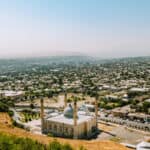
1 4 Top Things to do in Osh – Osh City Guide
There’s also some useful advice here about crossing the border from Osh into Uzbekistan . The border is open 24/7 but closes for lunch at 13:15 to 13:45.
FROM Osh TO FERGANA VALLEY BY shared taxi
While it is possible to try to grab a (shared) taxi to Fergana city, I’d recommend starting from Osh and traveling west to Andijan. Andijan is a city that sits cozy southeast of the Fergana Valley (we’ll delve more into Andijan soon). You can then plan your route from the east and make your way around.
You’ll need to do two trips in a (shared) taxi, one to the Dostuk checkpoint between Kyrgyzstan and Uzbekistan, and then grab another from Dostuk to Andijan. There are plenty of taxis at the border which travel to most cities in the Fergana Valley and Tashkent.
FROM Osh TO FERGANA VALLEY BY minibus
You can take a minibus between Osh and Andijan which takes around two hours. It costs around 100 som and leaves every 20 minutes from Osh. You can read more about how to make the journey here .
How to get to the Fergana Valley from Khujand or Istaravshan (Tajikistan)
Khujand is the main city in the Tajikistan part of the Fergana Valley and was once a bustling stop-off in the Silk Road history. Meanwhile, Istaravshan sits 78km south-west of Khujand and is an ancient trade and craft center (which is more than 2,500 years old!).
If you’re travelling from Istaravshan, it may well be worth getting to Khujand before heading to the border. I’ve found this blog a good read for passing through the border from Tajikistan to Kokand .
In Khujand, marshrutkas (minibus) to the Uzbekistan border depart from the northern bus station. When you’re on the Uzbek side, you can grab a small marshrutka to the nearby town Besharyk. From there, you can either grab another marshrutka or take a taxi.
By shared taxi
In Khujand, shared taxis to the Uzbekistan border depart from the northern bus station. When you’re on the Uzbek side, you can get in a small marshrutka to the nearby town Besharyk. From there, you can grab a taxi to Kokand.
If you want something more simple, a new bus line has been launched linking Khujand to Kokand, UaZ reported in 2022 . The bus will run from 08:00 to 20:00 and costs around 100,000 som.
Note: I haven’t had the chance yet to try out this bus. Let me and other readers know in the comments below if you have and how your experiences were!
Visit the best places in Uzbekistan with these 3 Uzbekistan Travel Itineraries
How to travel around in the Fergana Valley?
The best way to plan to get to the Fergana Valley is to go here after your arrival in Tashkent (on day 2 or 3) or once you’re back in Tashkent at the end of your trip through Uzbekistan . If you do the latter, you could continue traveling to Osh in Kyrgyzstan as it’s very close to the border. I suggest spending at least two to three days in this region.
When planning, think about whether you’re going east to west/west to east and what travel options there are (don’t worry that’s what I’m here for).
Shared taxis are an easy, affordable way to get about the valley. But remember, they’re not the same as Western taxis, they’ll leave once full of passengers (far more economical…right??). It’s a pretty reliable mode of getting from area to area in the valley, especially if you’re unsure about bus routes.
Sharq trains are older Uzbek trains that have been in use since the Soviet era. They are used to reach cities and regions farther from the Uzbek capital like cities in the Fergana Valley, Urgench and Khiva . I’ve written a full breakdown on what to expect on train travel.

The Complete Guide to Train Travel in Uzbekistan
Things to do and places to visit in Fergana Valley Uzbekistan
1. Fergana City
The city of Fergana sits south of the Fergana Valley and north of the magnificent Alai mountain range. You won’t necessarily find ancient monuments here because this city is a baby compared to its elder siblings. Fergana City was established in 1876 but the area still flourished with people for thousands of years prior to that.
The city is pretty modern and is an important industrial hub for Uzbekistan. The area is brimming with hotels and facilities so it’s a great place to base yourself before heading out trekking or on a longer trip.
The beauty of Fergana City is that even with its modern establishments, there are plenty of parks and green spaces to find some peace.

Things to do in Fergana City
There are no particular historical buildings of note here but maybe take your time to enjoy Fergana’s modern facilities.
There’s a tennis court, a bustling indoor bazaar and plenty of gardens to wander around in. Definitely check out the ‘Gate of Independence’ which was built in 1992 after the Soviet Union collapsed.
Where to eat in Fergana City
If you’re heading here during the tourist months, there’ll be plenty of fresh street food stalls to take your pick from, especially in and around the indoor bazaar.
- Traktir Ostrov Sokrovish : a cozy restaurant offering a diverse menu of European, Russian and Eastern European. It also has wifi if you need somewhere to chill and work.
- Brown Sugar Coffee House : a cute little spot to grab a bite to eat at a good price (also has veggie options!). Sometimes the piano is played.
- Pub #1 also has good recommendations. It again has a more diverse menu and you can sit in a chilled booth outside.
- If you’re craving some Uzbek cuisine, I’d try Ohu National Meals . They offer a good selection to eat in or take away.
Where to stay in Fergana City
- Click here for the rates and availability for Status House.
- Check here for the rates and availability.
How to get to Fergana City
By plane : Fergana has its own airport, so depending on your plans and amount of time/cash you have, it could be easier to land here.
Shared taxi : if you’re already in the Fergana Valley, I’d recommend grabbing a shared taxi. You’ll be able to settle a good price and you won’t be consigned to public transport schedules.
By bus: From Tashkent, Andijan or Margilan, Yutong buses of Uzautotrans Service JSC will take passengers to Fergana. Due to the service heading to Tajikistan, having your passport with you is mandatory.

2. Margilan
Margilan is the beating heart of silk production and has been since forever really (ok, since the Silk Road but still, a long time). Uzbekistan is the world’s third-largest silk importer and the small village of Margilan is the workhorse behind its legacy.
Legend has it that when leader Alexander the Great arrived at the village, he was given ‘Murgh’, meaning chicken, and ‘Nan’, meaning bread… and so Margilan was born.
Things to do in Margilan
If you want to see the whole silk manufacturing process – from how the silk is made, the traditional silk-weaving techniques to the final product, you should definitely visit the Yodgorlik Silk Factory . The entrance, including a guided tour in this factory, costs 30.000 som per person.

You should also visit the colorful Kumtepa bazaar (only on Thursdays and Sundays), the Said Akhmad-Khoja Madrasah , and the Pir Siddiq Complex .

Where to eat in Margilan
Anor is a sweet little family café with a terrace. It offers a diverse menu with delicious local dishes.
I haven’t seen any others so can’t really recommend more but it’s always worth making up a sandwich or grabbing something from the supermarket if you get hangry (hungry and angry).
Where to stay in Margilan
I’d recommend checking out Guesthouse Evergreen coming in at around $10 per night. It does what it says on the tin… it’s pretty green! It offers free bikes, garden, wifi, a shared lounge and terrace in Marghilon.
- Click here for the rates and availability.
How to get to Margilan
Margilan is only a 30-minute drive away from Fergana City, so if you’re staying there it may well be worth planning a day trip via shared taxi to Margilan.
You can take a direct train if you’re traveling from Kokand or Tashkent. You can find the time schedule and book tickets here .

How to visit the ship graveyard in Moynaq and the Aral Sea Disaster in Uzbekistan
What I love about each dwelling in the Fergana Valley is that they all have unique characteristics. Rishtan’s is pottery.
The area has some mighty fine red clay, providing potters with endless ceramic opportunities for thousands of years. You’ll see its iconic blue glaze, called ‘ishkor’, made from mineral pigments and ash mountain plants.
Rishan sits south of the valley, north of Kyrgyzstan, between Kokand and Fergana. It’s a great place to make a day trip from either place.
Things to do in Rishtan
The International Ceramic Center opened in 2021 and is like an art space for pottery masters. Workshops and stalls are located on the first floor, while the potters and their families live on the second floor. If a throwdown is your thing, you can arrange a private workshop.
You’re also always welcome to visit the Ceramic Workshop of Rustam Usmanov , one of Rishtan’s local ceramic masters.

The Bolsheviks destroyed many historical monuments of Rishtan but remains of an ancient settlement can be found in the Sohibi Hidoya cemetery. Kilns for firing ceramics and even glazed products were found… dating back to the 2nd century B.C.!
While you’re there, have a wander around the Khoja Ilgor Mosque , a small mosque within the grounds of the Sohibi Hidoya cemetery.
Where to stay in Rishtan
Why not stay at the home of a pottery master? Said’s Ce r amics offers private rooms to his guests in his beautiful decorated house.
How to get to Rishtan
There aren’t any public transport options to Rishtan, so you’ll have to grab a shared taxi .
You can take a shared taxi from Margilan to Rishtan. It’s about a one-hour drive. From Fergana to Rishtan is around a 45-minute drive; from Kokand, the journey is around 35 minutes.

Kokand, sitting in the southwestern edge of the valley, is usually overlooked by travelers in favor of the more famous cities of Bukhara , Samarkand and Khiva .
It does, however, boast some interesting history and played an important part during the ancient Silk Road, linking South Asia and East Asia and acting as a crossroads between these routes.
In the 18th century, Kokand was a huge powerhouse for Central Asia when it became home to the Kokand Khanate empire. Years later, the Khanate’s power soared and its territory housed not only Uzbekistan but southern Kazakhstan, Kyrgyzstan, and Tajikistan.
Kokand has since changed a fair bit…, especially during the Soviet Union. The city was known as ‘Cottonopolis’ after the cotton production rapidly increased under government orders in the 1920s.
As you can imagine, Kokand is bursting with history and it’s a wonderful place to learn about how this place influenced not only Uzbekistan and so many other areas.

Things to do in Kokand
Check out The Palace of Khudayar Khan (entrance fee is 25.000 UZS). This was once home to the most famous Khan with the Khanate of Kokand. The palace once had 118 rooms, each decorated with magnificent carved wooden features and intricately painted ceilings. The complex now houses a local history museum on the World Heritage List.

The Kamol Kazy Madrasah is one to marvel at for its architecture. The building was created with baked bricks and is adorned with dazzling geometric designs and Arabic inscriptions.
Take your time visiting the J o me Mosque , because there is a lot to learn here. The holy building was built by Umar Khan in 1812, then shut during the Soviet Union and then was reopened after some TLC in 1989.
Inside the Jome Mosque complex there are several exhibitions and workshops of the handcraft work in the Fergana Valley: wood, ceramics, silk, knifes,… Each workshop is lead by a master who will proudly share more info about his art. I would foresee at least 1,5 hours to visit all the workshops and exhibitions.
The entrance fee to visit Jomi Mosque and the workshops is 25.000 UZS per person.

Where to eat in Kokand
There’s a decent strip of restaurants and stores along Istikol Street between Muqimi Park and Abdulla Nabiev Maydoni Square.
Where to stay in Kokand
- Check out the rates and availability for Rohat Hostel here.
- Check out the rates and availability for Silk Road Kokand Hotel here.
- Check out the rates and availability for Reikartz Kokand here.
How to get to Kokand
There are trains connecting Kokand with Tashkent, Margilan and Andijan. You can check time tables and book tickets here .
If you’re travelling from Rishtan, it may be worth jumping in a (shared) taxi which will take you around 50 minutes. In the other areas I’ve cover, it’s a pretty long drive (two hours or more), so I’d recommend planning your itinerary accordingly.

Travel Guide to Sharisabz and 6 more great day trips from Samarkand
Nestled in rolling hills, Andijan is one of the valley’s oldest dwellings. Its history dates way back before the Silk Road… archeological digs have revealed people lived here more than 2,500 years ago! Despite its ancient roots, Andijan has evolved into an industrial city and an Uzbek powerhouse for oil and cotton in the republic.
Andijan’s story is also one of tragedy. In December 1902, a catastrophic earthquake shattered the city with a surface wave magnitude of 6.4. Records at the time claimed a number between 700 and 4,800 people were killed.
The earthquake devastated its ancient architecture too but the people’s spirit wasn’t defeated. Andijan continues to be the most populated place for Uzbek people in the Fergana Valley.
Things to do in Andijan
Markets are always a fascinating way to take in a city’s characteristics and I love pottering about in them (especially for photos!).
The Yan g i Bazaar is the largest market in the Uzbek side of the Fergana Valley. Open daily from 09:00 to 18:00, you can catch a multitude of traders in action. Meander around the stalls and take in the sounds, smells and sights… you won’t get bored here! The bazaar is at its best on Thursdays or Sundays.

The Dekhon Bazaar , also known as the central market, sits in the ‘Old Town’ part of Andijan. It has many traders and is a little quieter than the Jahon Bazaar.
The Jami Complex is one of the only remaining historical treasures standing after the 1902 earthquake. Opened in 1890, its minaret and madrasah are particularly unique in the valley… the madrasah’s length is around 123 meters while the minaret looks over Andijan from 32 meters.

If you’re craving some nature, there’s a stunning 28km hiking trail from Andijan passing through the Sary Tash Valley. It takes around 9-10 hours so I’d either recommend getting up super early, or try to organize a homestay in the villages you’ll walk past. AllTrails has the full details here .
Where to eat in Andijan
The Yangi Bazaar is where many of the locals come to get food and I’d recommend checking it out. There are so many stalls to take your pick from and if the food can’t tempt you, take a look at all the other trinkets being sold.
For a traditional Uzbek dining experience, head to EcoFish . The menu is classically Uzbek and the restaurant has such a beautiful interior.
How to get to Andijan
If your starting point is Osh (Kyrgyzstan), jump in a shared taxi at the border and head to Andijan. It’s around an hour and 30 minutes drive. You’ll probably need to do two trips in a shared taxi, one to the Dostuk checkpoint between Kyrgyzstan and Uzbekistan, and then grab another from Dostuk to Andijan.
You can also take a mashrutka (minibus) between Osh and Andijan which takes around two hours. It costs around 100 som and leaves every 20 minutes from Osh. You can read more about how to make the journey here .
From Namangan , the journey is around an hour and 15 minutes drive and will cost around $3. You can make the trip also from Fergana and Margilan , but it’s a tad longer at around an hour and 30 minutes drive.
You can also take a train to get to Andijan from Tashkent or Kokand. You can check time tables and book tickets here .
6. Namangan
Namangan is the religious center and one of the most conservative cities in Uzbekistan. There used to be more than 600 mosques in this city but most of them were destroyed during the Soviet rule and by an earthquake in 1926.
It’s also the third-largest city in the country! Built close to the Naryn and Kara Darya rivers, the city became established as a pretty big settlement in the north of the valley by the 17th century.
Namangan’s name was derived from nearby salt mines (namak kan means salt mine in Uzbek). Like so many places in the Fergana Valley, the city is home to beautiful crafts including talents from potters, weavers, cobblers, blacksmiths and jewelers. Today, those talents still remain an integral part of Namangan.
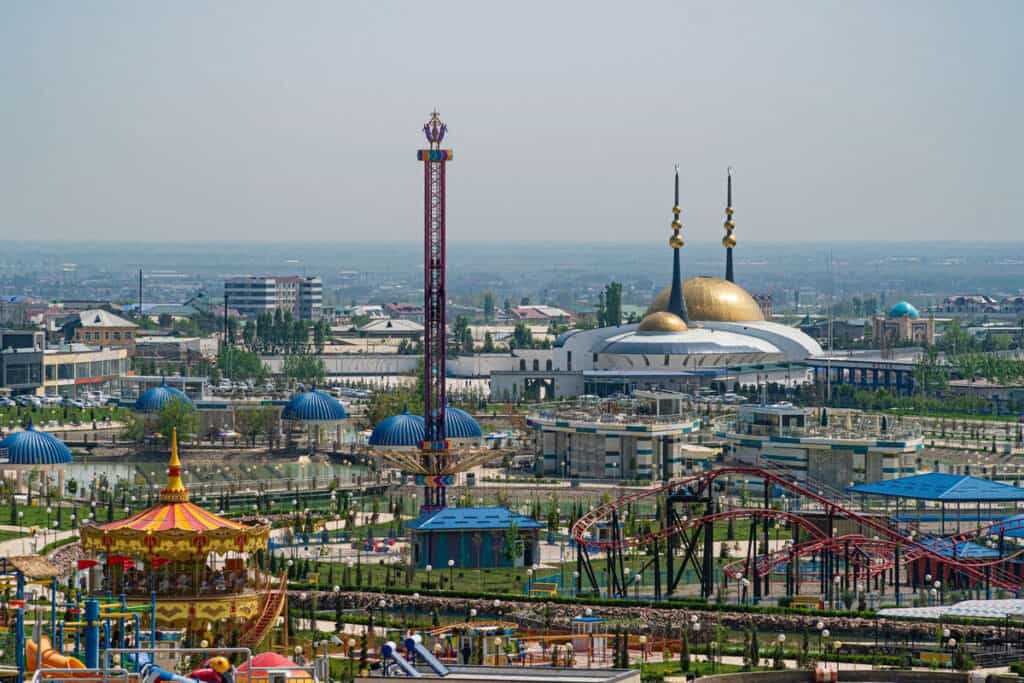
Things to do in Namangan
Babur Park was built in 1884 and covers a whopping 13 hectares in the city center. It’s a peaceful place to walk around and watch the locals play games in the shade of the trees.
Namangan State Museum of History and Culture houses hundreds of ancient relics and finds of geology, zoology and mineralogy!
The Mullah Kyrgyz madrassah functions now as a museum dedicated to the craftsman who created it. You can walk up to the roof and marvel at the bazaar in the square.
There are also many beautiful mosques and mausoleums to explore including the Khodja Amin Cabri Mausoleum and mosque.
The Atavalikhonture Mosque, also known as Ota Valikhon Tur Mosque ( check maps.me for the exact location ), is the place where the now-banned Wahabi Islamic Movement of Uzbekistan was founded. Ensure you are wearing appropriate clothing and check before you go in that it is allowed as some mosques do not allow women in.
If archaeology is your thing, definitely check out the ancient settlement of Akhsikent. It’s around 22km from Namangan and delves so much into the area’s history. Digs unearthing items from the 8th and 9th centuries revealed that Akhsikent was actually called Ferghana!

Fancy a swim? There are hot springs north-east of Namangan near the town of Chartak. The springs are also known for the mineral water brand Chortoq . Head to the top of the springs and there is a spa facility called Chortoq Sanatorium where you can bathe and chill.
Where to eat in Namangan
Sayohat Oshxonasi is a traditional Uzbek cafe with a gorgeous outdoor terrace to sit and relax in.
Guliston Cafe sits on the canal waters and has a decent menu of Uzbek cuisine. Many people like the pilov and kebab dishes here.
Where to stay in Namangan
- Check out the rates and availability for Sardoba Hostel here.
- Check out the rates and availability for Orzu Hotel here.
How to get to Namangan
Namangan can be done as a day trip from Margilan which is an hour’s drive by shared taxi. You can spend another evening in Margilan or Fergana or take the train from Margilan back to Tashkent in the late afternoon.
If you’re coming from Fergana , you take a shared taxi from there to Namangan. It’s around a 1 hour and 30 minutes drive.

Thank you for reading and hope this guide inspired you to visit the Fergana Valley in Uzbekistan! If you’d have more questions or any updates, let me and other travelers know in the comments below!
- Tashkent City Guide
- Samarkand City Guide
- Shahrisabz City Guide
- Bukhara City Guide
- Khiva City Guide
- Fergana Valley Guide
- Karakalpakstan Guide
Related Posts
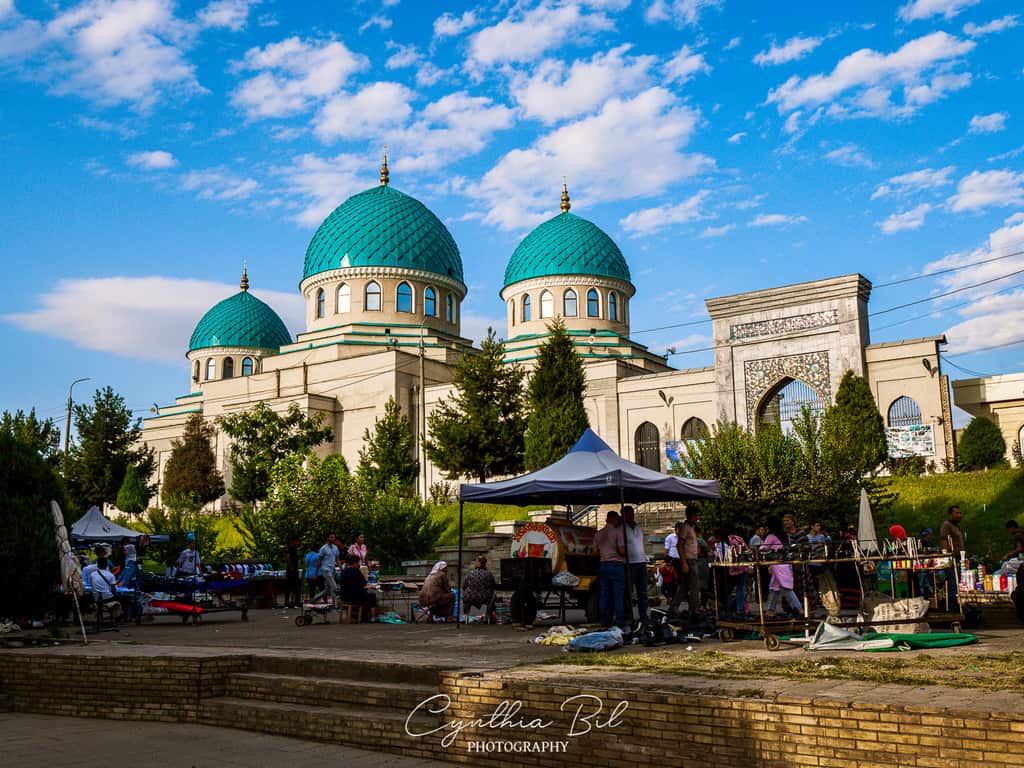
The best way to get from Tashkent to Osh and from Osh to Tashkent, crossing the Dostyk border (Kyrgyzstan – Uzbekistan)
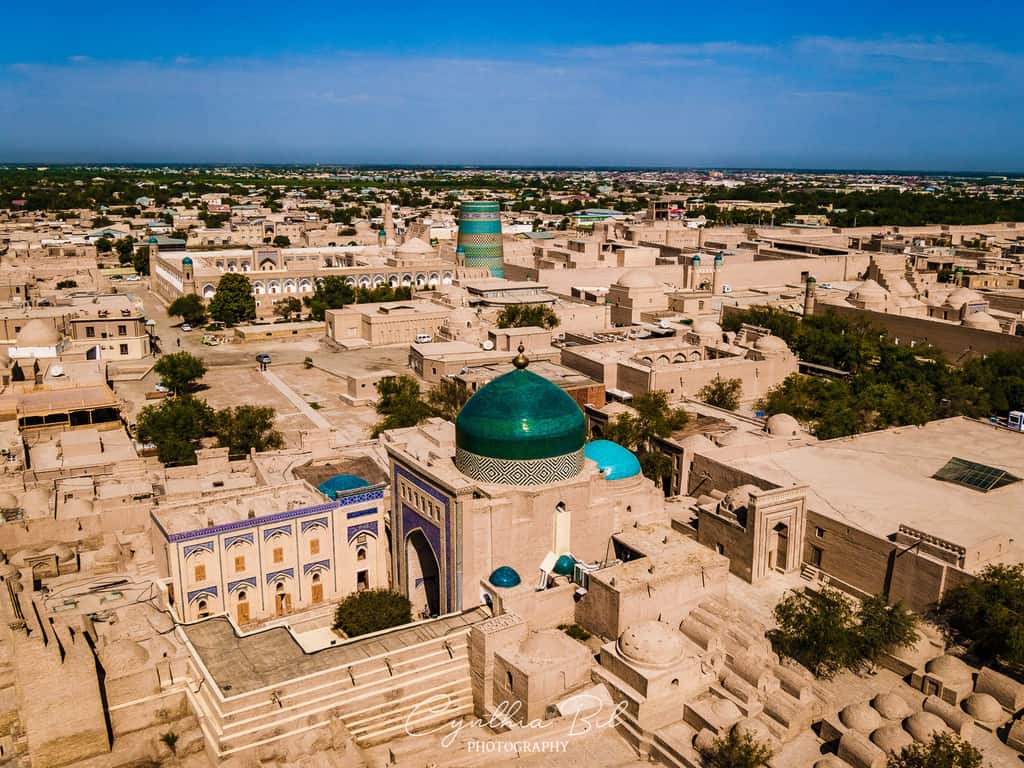
The Best Uzbekistan Itinerary ideas: What to Visit in one week in Uzbekistan up to 4 weeks?
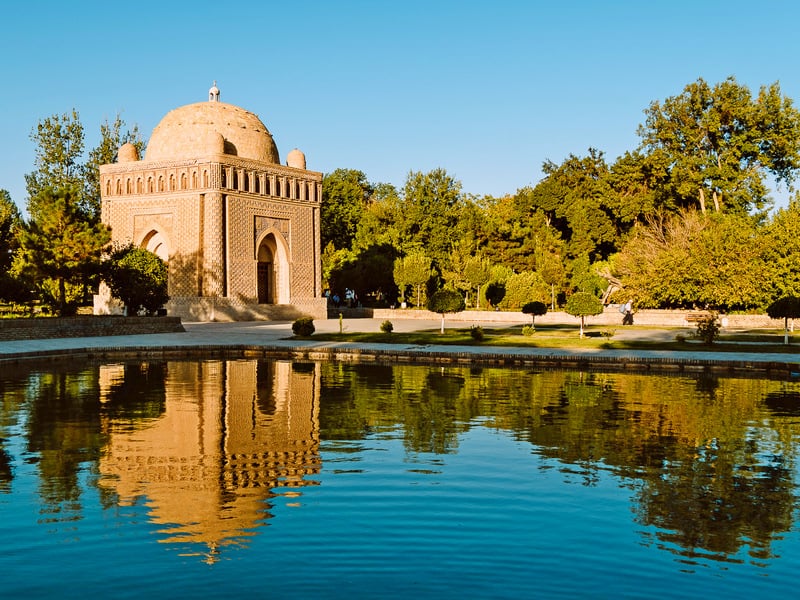
Uzbekistan Money Guide (2024) – How much does it cost to live and travel in Uzbekistan?
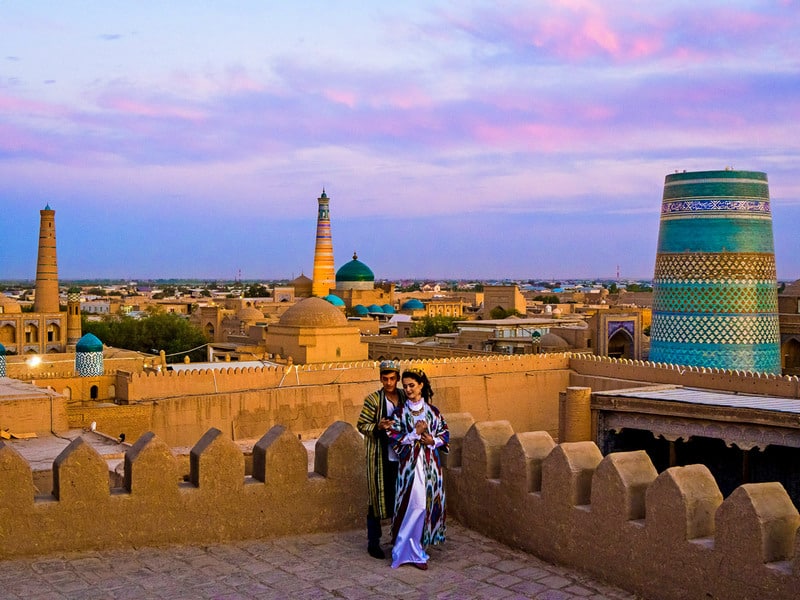
What are the 26 Best Places to visit in Uzbekistan in 2024?

Everything you need to know about horse riding in Uzbekistan+ 3 best horse trekking destinations in Uzbekistan

Hiking in Uzbekistan – 6 best Hiking Trails in the Nuratau and Chimgan Mountains in Uzbekistan
Leave a comment cancel reply.
Your email address will not be published. Required fields are marked *
Save my name, email, and website in this browser for the next time I comment.

Kokand Voyage Tips and guide

Kokand (also Khoqand, Quqon or Qo'qon) is a city on the southwestern edge of the Ferghana Valley in Uzbekistan . Population was about 200,000 as of 1999.
Understand [ edit ]
Kokand is a trading city on the Silk Road , at a junction where a route going north to Tashkent branches off the main trail from Samarkand through the Ferghana Valley and over a pass to Kashgar . It has existed for at least a thousand years.
The city's glory days were 1709-1876 when it ruled the Kokand Kanate, which included parts of what are now four countries. The Russians put an end to that. Yakub Beg, who was born near Kokand and started his career in the Khan's army, built a kingdom around Kashgar and ruled much of what is now Xinjiang in the late 19th century, but Chinese forces ended that.
Get in [ edit ]
By train [ edit ].
Uzbek Railways [dead link] operates daily trains from Tashkent , additionally there are 1-2 services per week from Moscow .
- 40.51909 70.928564 1 Kokand railway station . ( updated Nov 2019 )
By bus [ edit ]
- 40.5231 70.9563 2 Bus Station . ( updated Feb 2016 )
Get around [ edit ]

See [ edit ]
At one time, Kokand had over 300 mosques; some of those survive.
- 40.5386 70.9381 1 Palace of Khudayar Khan . Only nineteen of the palace's original 113 rooms survive; they are now a museum. ( updated Feb 2016 )
- 40.5322 70.9446 2 Khamza Museum . dedicated to Kokand’s Soviet poet and hero Hamza Hakimzade Niyazi. ( updated Feb 2016 )
- 40.5319 70.9451 3 Khamza House Museum . ( updated Feb 2016 )
- 40.5306 70.9454 4 Mukimi Museum . ( updated Feb 2016 )
- 40.533 70.9492 5 Jummi Mosque . The Jummi Mosque, built 1800-1812, is large enough to hold 10,000 worshippers. ( updated Feb 2016 )
- 40.5321 70.9436 6 Amin Bag Madrassah . Built in 1830 and restored in 1913, the madrassah was closed under the Soviets and reopened in 1991. A carved wooden gate leads to the main courtyard with colored tiled walls ( updated Feb 2016 )
- 40.5397 70.9498 7 Dasturkhanci Madrassah . ( updated Feb 2016 )
- 40.5386 70.9523 8 Narbutabey Madrassah . ( updated Feb 2016 )
- 40.538 70.9551 9 Modar-I-Khan Mausoleum . ( updated Feb 2016 )
- 40.5379 70.9578 10 Dakhma-i-Shakhon . ( updated Feb 2016 )
Do [ edit ]
Buy [ edit ].
- 40.5262 70.9545 1 Kokand Bazaar . ( updated Feb 2016 )
- 40.356 71.279 2 Rishton Ceramics Factory , in the town of Rishton ( Half-way between Kokand and Ferghana ). The Rishton factory is famed for its blue and green ceramics. Decorative plates, tea-sets with floral design are sold to visitors. However such items are not hand-made. Modern machinery is used in the production process. ( updated Feb 2016 )
Eat [ edit ]

- 40.5326 70.9432 1 Markhabor Teahouse . ( updated Feb 2016 )
- 40.5322 70.9426 2 Ghuldasta Teahouse . ( updated Feb 2016 )
Drink [ edit ]
Sleep [ edit ].
- 40.5358 70.9326 1 Hotel Istiqlol , ☏ +998 91 140 80 00 . ( updated Feb 2016 )
- 40.5358 70.9303 2 Hotel Khan , 31, Istiqlol Kuchasi . ( updated Feb 2016 )
- 40.5363 70.9267 3 Kokand City Hotel , Imam Ismail Buchari Kuchasi ( near Nabiyev Cinema ), ☏ +998 95 400 40 81 . ( updated Feb 2016 )
- 40.5769 70.9156 4 Dangara Hotel , Tashkent Street 70 ( Opposite Dangara bus stop. ), ☏ +998 73 503 80 04 . Comfortable Motel located 5 km from the city center. Outdoor swimming pool and sauna $46 per night (2016) . ( updated Feb 2016 )
Connect [ edit ]
Go next [ edit ].

Tour to Fergana Valley
Visit the palace of the last Kokand Khan, the workshop of local blue ceramics artisans, and the silk mill in Margilan, where famous Margilan silk is made. This best tour to the Fergana Valley has it all, from history to artistry and more.
Kokand, Rishtan, Fergana, Margilan
2 Days | All year round | from US$ 400 per person Details
Kokand, Uzbekistan - Travel
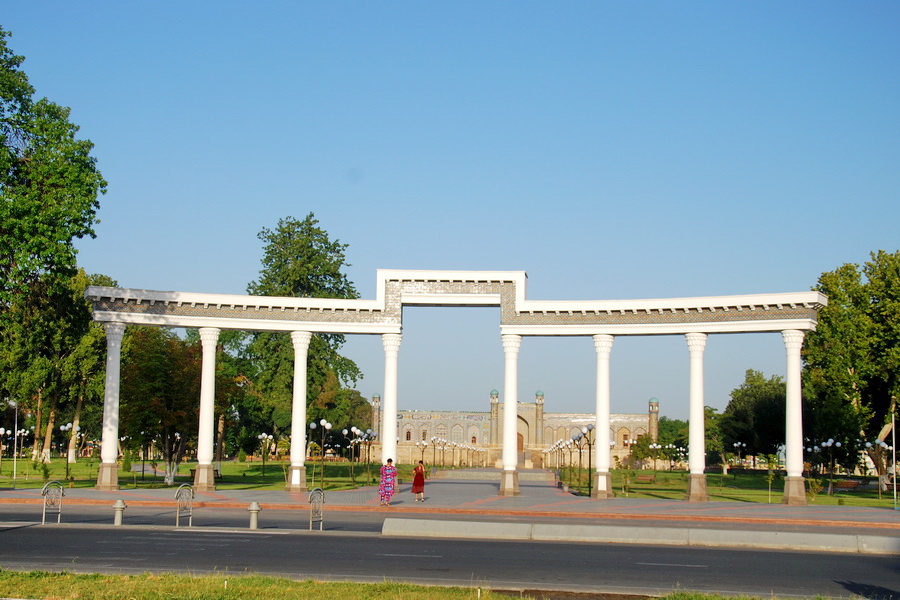
Tours, Attractions and Things To Do in Kokand
Kokand city, located in the western part of the Fergana Valley, is one of the most ancient cities of Uzbekistan. The first written records about the city Hukande, Havokande (old names of the city) were found in the chronicles of the 10th century. The town was important trade center on the Silk Road and in the 13th century, like most Central Asian cities, was destroyed by the Mongols.
The world fame came to the city in the 18th century, when it became the capital of the richest and the most developed Kokand Khanate. In the first half of 18th century near the current city (the territory of Bukhara Khanate that time), the founder of the Kokand Khans’ Dynasty laid the fortress of Eski-Kurgan (1732), which actually gave birth to new Kokand. Soon it has got its former name – “Khuk-kand" (“Boar city"). Originally it was a small possession, isolated from the Bukhara Emirate, but gradually it has expanded geographically.
The Khanate reached its power in the first half of the nineteenth century, when its territory included the major part of present-day Uzbekistan, part of southern Kazakhstan, Kyrgyzstan, Tajikistan and China. The Kokand Khanate also included Tashkent and Shymkent. It was a big, powerful state, prosperous trading and religious center. Only in Kokand there were over 300 mosques and dozens of madrassahs.
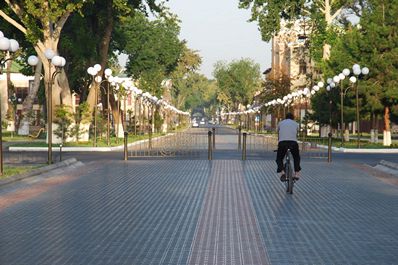
Over the history the Kokand Khanate changed 29 governors, the most famous khan was the last one - Khudayar Khan, who became notorious for his cruelty and greed. During the reign he four times lost his throne and again won it back. He made a lot to beautify the city: guzars, mosques, madrasahs were built during his reign.
In the second half of the 19th century Bukhara, Khiva and Kokand Khanates started the struggle for power in Central Asia. Taking this opportunity, Tsar Russia has begun campaign of conquest to Central Asia. In 1868, pursuant to the contract the Kokand Khan was equated with their rights to a vassal of the Russian Empire. It was the end of the history of the Kokand Khanate, which had existed almost 170 years.
After Kokand became the part of Russia, the Khan's palace was turned into a fortress, and new highways were laid through resident quarters – mahallas, along which buildings of European architecture were constructed. The city quickly became a major center of capitalist activity in Turkestan, surpassing even Tashkent in number of banks.
All monuments of the khan period, dating from 18-19th centuries preserved perfectly in today Kokand.
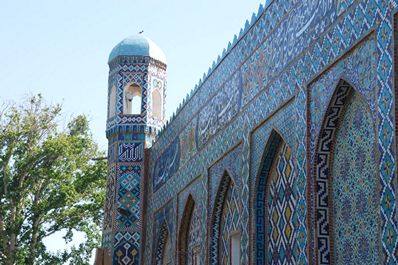
Attractions

IMAGES
VIDEO
COMMENTS
In this concise travel guide, I'll share with you all the best things to do in Kokand plus some extra travel tips. Things To Do in Kokand Khudoyar Khan Palace. Kokand is home to the most popular historical monuments of the Fergana Valley and the Khudoyar Khan Palace is certainly the biggest draw of the city. Located inside a large grassy park ...
Kokand pilaf is made exclusively from a special kind of rice called devzira. This variety is also used throughout the valley. This kind of pilaf is prepared exclusively with garlic and hot pepper and in no case, are any sweet additives added to it. Of all types of pilaf, Kokand is the most difficult to digest, so be sure to take enzymes with you!
Kokand. If you are heading east from Tashkent, Kokand (Qo'Qon in Uzbek) is worth a stop. The Kokand khanate was an important political force in the early 19th century, and after the Russian conquest in the second half of that century, the cotton boom made some people very rich. That history still lives on in the cityscape of Kokand today.
Kokand is located in Eastern Uzbekistan at the southwestern edge of the Fergana Valley, about 230 km southeast of Tashkent and close to the border with Tajikistan and is perhaps the most attractive city for a tourist in the Uzbek Fergana Valley. Kokand is the valley's first important town on the road from Tashkent being a gateway to the region and a stopping spot for many pilgrims.
Kokand is a trading city on the Silk Road, at a junction where a route going north to Tashkent branches off the main trail from Samarkand through the Ferghana Valley and over a pass to Kashgar. It has existed for at least a thousand years. The city's glory days were 1709-1876 when it ruled the Kokand Kanate, which included parts of what are now ...
The best day trips from Kokand according to Tripadvisor travelers are: Fergana Valley Tour; Full Day Private Tour to Fergana Valley from Tashkent; Tour in Samarkand & Bukhara with Fergana valley (8d7n) See all day trips from Kokand on Tripadvisor
Kokand airport, 10 kilometres from the city centre, remains dormant, so most tourists fly into the valley via Ferghana city. The train station in the southwest has departures to Tashkent every other day via Tajikistan but are very inconvenient as you'll need a Tajik transit visa and multiple-entry Uzbek visa.
Kokand is a city of 200,000 inhabitants in the eastern part of Uzbekistan. Located in the Fergana Valley, which leads to Tajikistan and Kyrgyzstan, the region is well known for its devout Muslim population. Kokand is one of the oldest cities in Uzbekistan, and it is known that the city existed at least as early as the 10th century.
Main sights of Kokand . Kokand situated 88 km from the city of Fergana is one of the most important urban centers of the Fergana Valley and entire Uzbekistan.. Kokand was once a part of the antique country of Davan, but actually flourished in the 18th century, when it became the capital of the Khanate of Kokand and religious centre of the region, with about 40 madrasahs (also spelled madrasa ...
5. Kokand Fortress - This fortress was built in the 18th century and is one of the oldest in the region. It is an impressive building with a large courtyard and a variety of buildings, including a mosque and a madrasa. The fortress is open to the public and is a popular tourist attraction. 6.
A mix of the charming, modern, and tried and true. See all. Silk Road Kokand Hotel. 54. from $45/night. Asmald Palace. 16. from $57/night. Rohat Hostel.
Kokand, Uzbekistan - Travel Tours, Attractions and Things To Do in Kokand. Kokand city, located in the western part of the Fergana Valley, is one of the most ancient cities of Uzbekistan. The first written records about the city Hukande, Havokande (old names of the city) were found in the chronicles of the 10th century. The town was important ...
Kokand. East of Uzbekistan, in the Fergana Valley, is the old city of Kokand. It historically served as a key administrative hub for the Kokand Khanate, which in the 19th century governed over a sizable portion of Central Asia. The various ancient landmarks and monuments in Kokand, including palaces, mausoleums, mosques, and madrasas, serve as ...
In the 18th century, Kokand was a huge powerhouse for Central Asia when it became home to the Kokand Khanate empire. Years later, the Khanate's power soared and its territory housed not only Uzbekistan but southern Kazakhstan, Kyrgyzstan, and Tajikistan. Kokand has since changed a fair bit…, especially during the Soviet Union.
Kokand was once the capital of the powerful Khanate of Kokand, which was a significant power in Central Asia during the 18th and 19th centuries. The city played a crucial role on the Silk Road, one of the most important trade routes in the ancient world, facilitating trade between China, India, Persia, and the Mediterranean region.
The town of Kokand is one of the oldest towns in Uzbekistan and is situated in the western part of Fergana Valley. In the chronicles of the 10th century, the first written documents concerning town of Hukande, Havokande (old names of the town). In the 13th century, like most of Central Asian towns, the Mongols ruined the city.
Understand [edit]. Kokand is a trading city on the Silk Road, at a junction where a route going north to Tashkent branches off the main trail from Samarkand through the Ferghana Valley and over a pass to Kashgar.It has existed for at least a thousand years. The city's glory days were 1709-1876 when it ruled the Kokand Kanate, which included parts of what are now four countries. Th
Kokand, located 228 km southeast of Tashkent, is considered one of the most significant cities in Uzbekistan. These days, Kokand is not only an important industrial, cultural, and trading hub but also a land of famous poets, writers, and scholars. History of Kokand. Being located on the crossroads of the ancient trading routes in the Uzbek ...
Get in []. Trains from Tashkent take four hours and cost roughly 40,000 som. Kokand is at a crossroads on the old Silk Road caravan trails, the main transportation junction in the Fergana Valley. Roads over the passes go East, another leads Northwest over the mountains to Tashkent, and another West through Khujand.. Get around [] See []. Khudoyar-Khan Palace - the pearl of Kokand, this was the ...
Kokand, Uzbekistan - Travel Tours, Attractions and Things To Do in Kokand. Kokand city, located in the western part of the Fergana Valley, is one of the most ancient cities of Uzbekistan. The first written records about the city Hukande, Havokande (old names of the city) were found in the chronicles of the 10th century. The town was important ...
Kokand is located in the Fergana Valley in eastern Uzbekistan. It has an estimated population of 200,000 (2001) and is 228 km from Tashkent. As before, Uzbekistan Railways tickets were purchased online. The Uzbekistan Railways app is well-designed and, once installed on your smartphone, it is easy to check seat availability and purchase tickets.
Area 2,600 square miles (6,800 square km). Pop. (2017 est.) 3,564,800. Kokand, city, eastern Uzbekistan. It lies in the western Fergana Valley, at road and rail junctions from Tashkent to the valley. The ancient town of Khavakend occupied the site from at least the 10th century and was situated on the caravan route from India and China.
Flex your dates to secure the best air ticket price for your Kokand flight. If your travel dates are flexible, use Skyscanner's "Whole month" tool to find the cheapest time to fly to Kokand. Set up a Price Alert. You can easily track the fare of your flights to Kokand by creating an alert. Whenever prices go down or up, you'll get a push ...